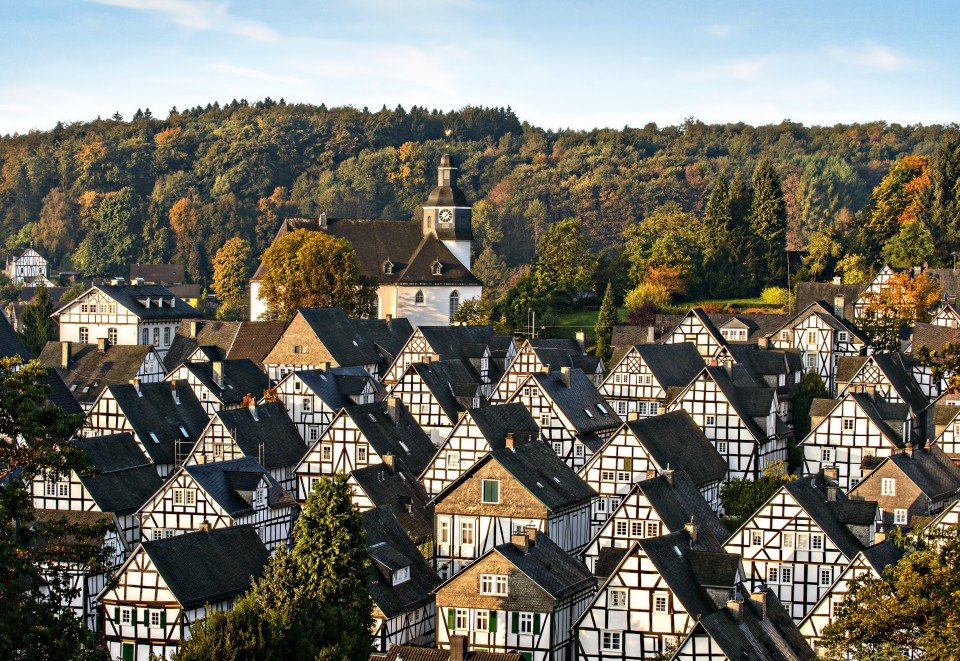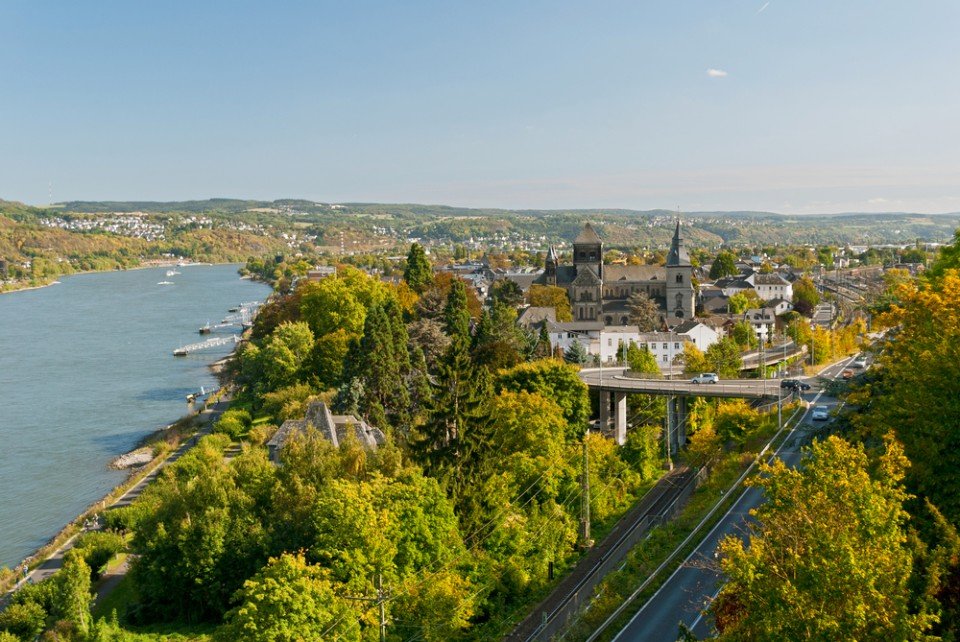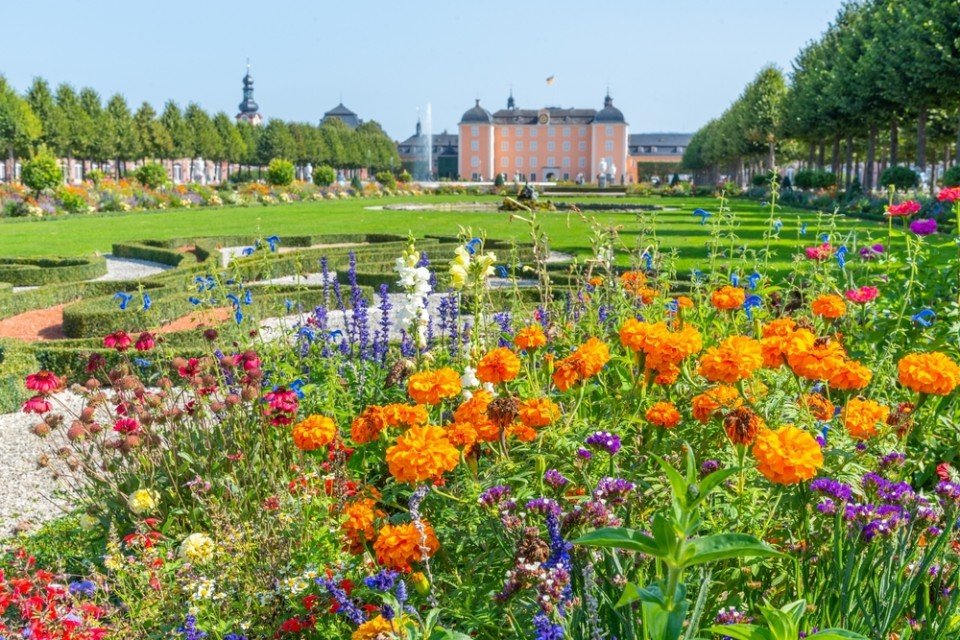Warnemünde
Warnemünde, officially a suburb of Rostock, is a quaint seas...
View Cologne River Cruises View Germany River Cruises
When it comes to Europe river cruises, Germany is a country rich in both waterways and heritage, and a river cruise is the perfect way to experience both, which makes for a truly memorable holiday. Indeed, the country is one of the most popular with river cruisers, and with good reason. It’s home to one of the world’s most famous and scenic rivers, the Rhine, which acts as the perfect showcase for some of Germany’s most noted areas of natural beauty along the Rhine Valley. Make it a Germany river cruise to remember and book your 2024 river cruise now at River Voyages.com.
The Main is possibly the Rhine’s most well-known tributary and lies entirely in Germany, meaning it’s a great way to explore the country’s history. It delivers an authentic taste of the Europe of old, a voyage through the Bavarian heartland, and the chance to explore some truly memorable towns and cities. With many amazing cruises through Germany, why not look for a mini river cruise to pack a full cruise experience into a neat little holiday package?
Another Rhine tributary is the Moselle, which offers the perfect laid-back German river cruise experience and is a must for wine-lovers, as it goes through one of the country’s celebrated wine-growing regions. The Elbe is one of Europe’s major rivers and the perfect way to see what Eastern Germany has to offer, including the beautiful region of Saxony and the chance to explore the country’s historic capital, Berlin.
There are many amazing destinations to explore on our range of river cruises in Germany. A Cologne river cruise gives you the chance to explore one of Germany's oldest cities. With there being many rivers flowing through Germany, let's take a look at each of them and what you can expect to see on your river cruise in Germany.
At over 760 miles long, the Rhine is one of Europe’s key rivers, winding its way through numerous countries and their histories. It begins its journey high in the Swiss Alps on a Switzerland river cruise and continues across Germany before ending up in the Netherlands, which you can explore on a Holland river cruise.
German river cruises are a great way to explore the river’s most picturesque area, the beautiful Upper Middle Rhine Valley, which is a UNESCO World Heritage Site. German Rhine River cruise highlights include one of the country’s most famous cities, Cologne. A city tour excursion will reveal numerous architectural treasures, most notably one of the world’s largest and most beautiful cathedrals, the Dom.
The Rhine offers a great way to see some of Germany’s most splendid castles, and a stop at Koblenz, where this majestic river meets the Moselle, gives you the chance to explore one of the finest, the 700-year-old Marksburg Castle.
Rudesheim delivers plenty of picturesque village charm and lies at the heart of the country’s Rheingau wine region, while Heidelberg is another popular port and home to the oldest university in Germany. The country’s Black Forest is one of its national treasures, and Breisach marks many Rhine river cruises’ entrance into this truly majestic region. Some itineraries also offer a taste of France with a stop at the Germanic French town on a Strasbourg river cruise, the official seat of the European Parliament.
A tributary of the Rhine, the Main is the perfect place for a Germany river cruise; the river has formed part of Europe’s largest continuous waterway since 1992, when the completion of the Main-Danube Canal connected it with the Danube. A number of longer European river cruise itineraries explore the entire length of this 2,200-mile waterway, but the Main itself boasts a number of memorable sights and offers a fascinating journey through Germany’s history.
Frankfurt marks the start of many Main river cruises and it’s a place where old and new sit side by side, a fact which is best evidenced by scaling Main Tower to take it all in. Don’t miss the historic city hall and the beautiful botanical gardens. Wurzburg and Rothenburg both offer a taste of northern Bavaria, the former being home to the Baroque Bishop’s Residence and the latter offering a rich mediaeval heritage and some splendid architecture. Take a luxury river cruise and see some of Germany's most historic settlements.
The Moselle is one of the Rhine’s tributaries, and after beginning its journey in France on a France river cruise, it flows through Luxembourg and into Germany. A Moselle cruise offers an idyllic river cruise experience and the chance to drink in one of Germany’s numerous wine-growing regions. Many Moselle cruises begin in Trier, the oldest city in Germany. One key relic from its past is the Black Gate, the only remaining part of this city’s ancient Roman walls. The Moselle is the perfect place for an all inclusive river cruise.
Bernkastel is situated in the beautiful Moselle Valley, and as well as taking in the gorgeous scenery as you approach, you’ll be able to disembark and explore this quaint town at your leisure. Being that the town is situated in one of Germany’s key wine-growing regions, a number of river cruise deals also offer wine-tasting excursions from here. Cochem’s celebrated castle offers some fabulous views of this beautiful region as well as a fascinating tour, while Koblenz marks the point where the Moselle joins the Rhine. Indeed, you can visit Deutsches Eck, the symbolic meeting point of these two rivers, during your time in Koblenz.
The perfect way to experience eastern Germany, an Elbe river voyage offers you the chance to see the country’s capital too, because although it doesn’t sit on the Elbe, Berlin acts as the point of transfer either at the start or at the end of your voyage. As well as the famous Reichstag, you can visit the Berlin Wall memorial and a wealth of museums.
Magdeburg is the port where many river cruises in Germany begin, while Dessau offers the chance to explore Worlitz Park, the first landscaped garden in Germany, complete with an English-style country home. Wittenburg is where you’ll be able to explore the past of one of the region’s most famous historical figures, Martin Luther.
Dresden is another jewel in Germany’s historic crown, and indeed, it’s home to the celebrated Green Vault, where many of the treasures and relics of Saxon monarchs-past are housed. Before the Elbe crosses into Eastern Europe, it passes through the beautiful Saxon Switzerland region, where breath-taking rock formations and enchanting spa towns ensure a truly memorable cruise. Take advantage of our cheap river cruises and enjoy a Germany river cruise for a great price.
Make sure to book your river cruise in Germany for 2024, or plan ahead and be ready with a river cruise in 2025. If you are looking for a Germany river cruise and need some help with your booking or just need some travel advice, then be sure to get in touch with us and call our freephone service at 0800 1970854 or email us at [email protected], and one of our friendly and helpful staff will be on hand to assist you with any queries.
Rudesheim am Rhine is a town in the Rhine Valley in Germany...
Bernkastel-Kues is an enchanting fairytale town situated...
Rudesheim am Rhine is a town in the Rhine Valley in Germany...
Bernkastel-Kues is an enchanting fairytale town situated...
Rudesheim am Rhine is a town in the Rhine Valley in Germany...
Bernkastel-Kues is an enchanting fairytale town situated...

Warnemünde, officially a suburb of Rostock, is a quaint seaside resort town with the best hotels and restaurants in the area, as well as 20 km (12 miles) of beautiful white-sand beach. It's been a popular summer getaway for families in eastern Germany for years.There is little to do in Warnemünde except relax, and the town excels brilliantly at that. However, Warnemünde is a major cruise-ship terminal. Whenever there is more than one ship at dock, the town explodes with a county fair–like atmosphere, and shops and restaurants stay open until the ships leave at midnight. The city celebrates the dreifache Anlauf, when three ships dock simultaneously, with fireworks.

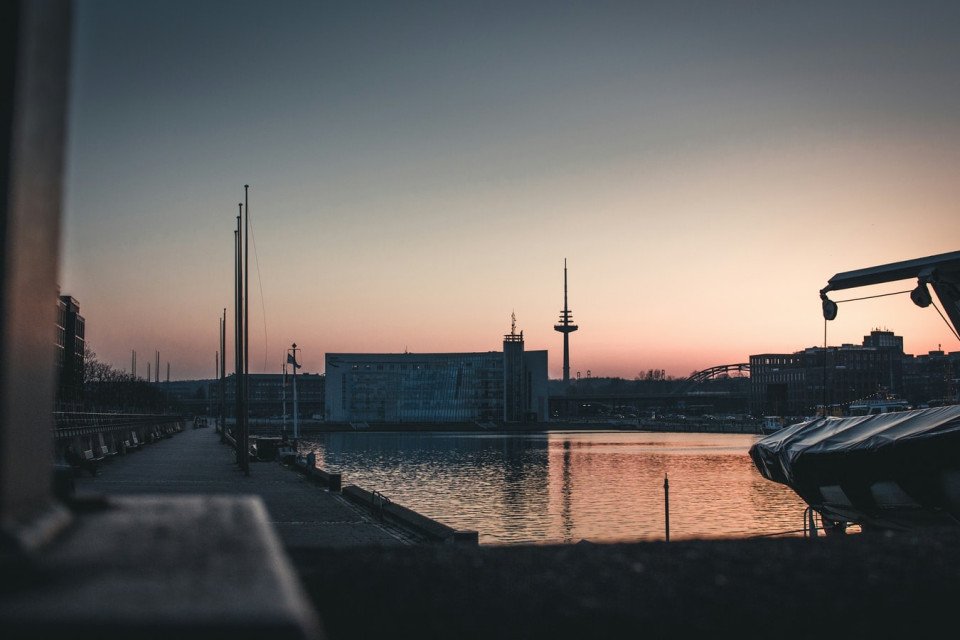
Known for the Kiel Canal and Kiel Week, the city boasts an important maritime history. Kiel is also a great place to sight-see, do some shopping and take part in one of the many festivals taking place there.
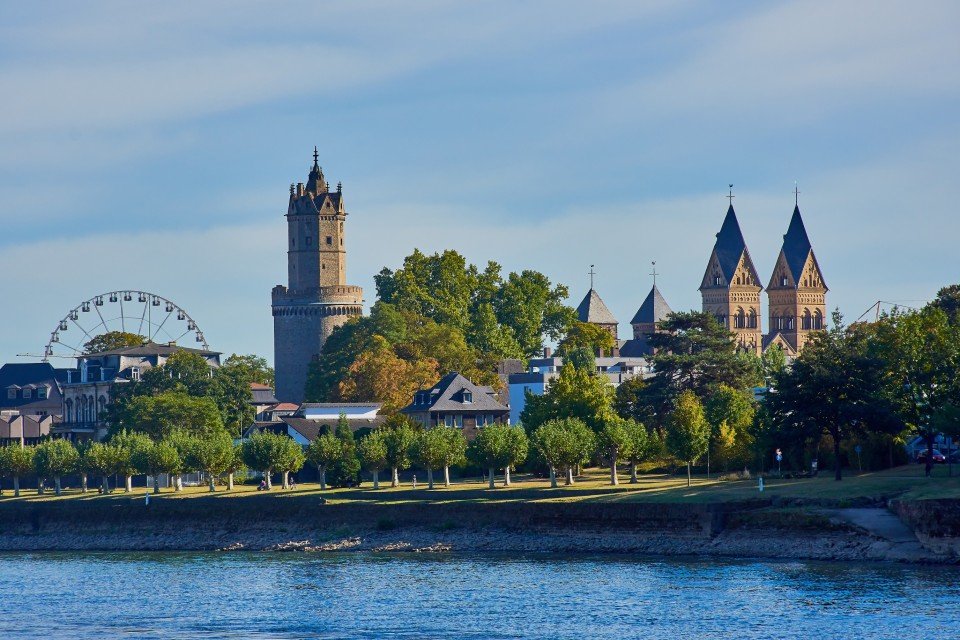
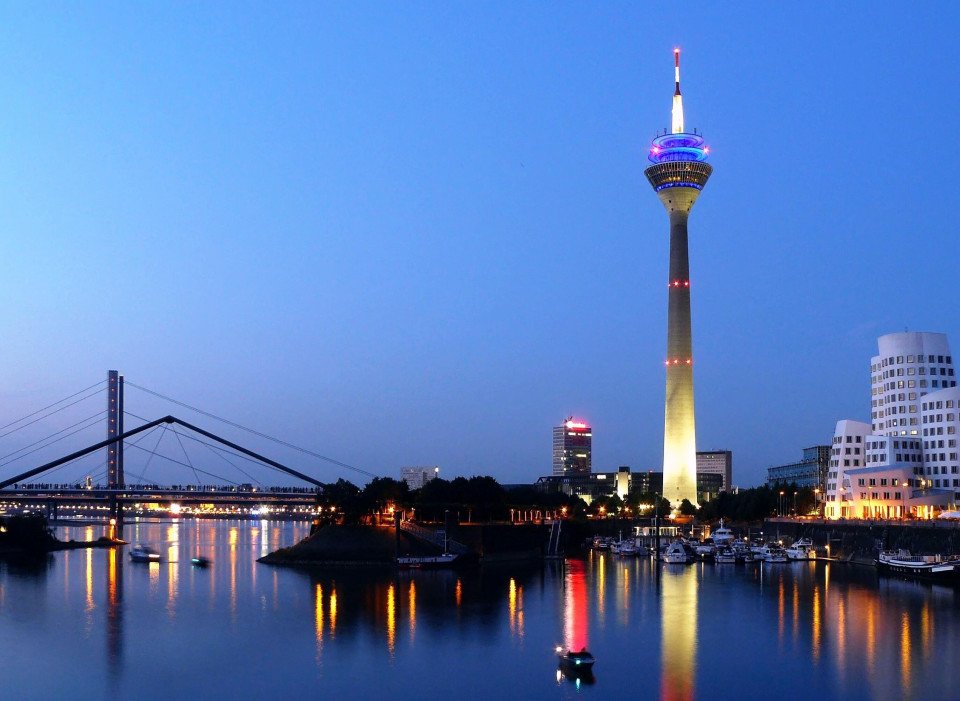
World-renowned for its vivacious arts and fashion scene, Düsseldorf sits along the Rhine River in western Germany and beautifully blends contemporary architecture with historic significance, offering its visitors a wonderfully diverse experience. Düsseldorf boasts an array of museums, galleries and boutiques, making it a key cultural hub.
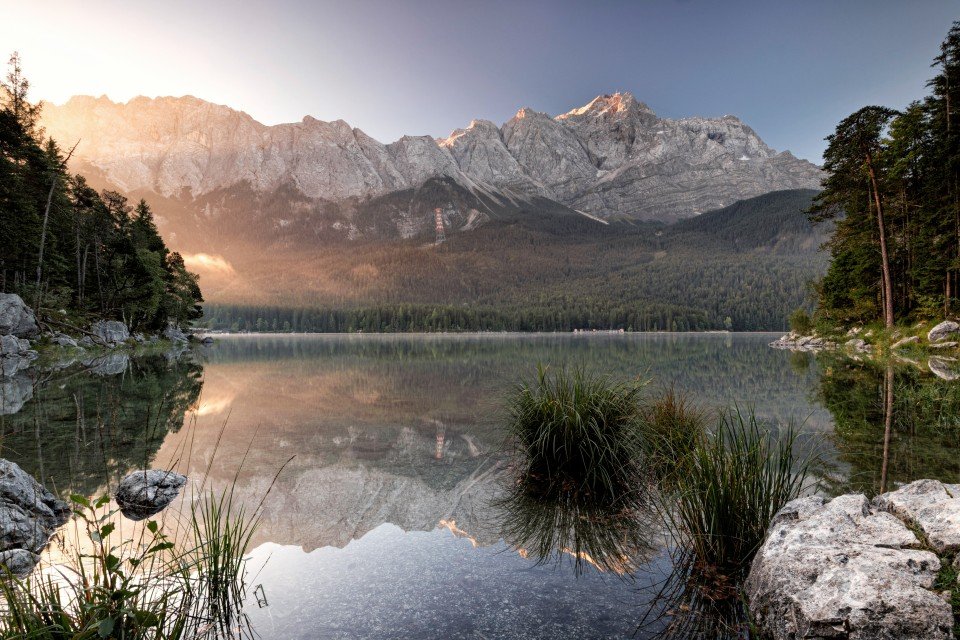
A charming town known for its winemaking traditions, Kitzingen is located in Bavaria alongside the Main River, home to historic landmarks including the Old Main Bridge and the Kitzingen Fortress, reflecting its medieval past. With festivals and events celebrating its wine culture, Kitzingen's vibrant atmosphere make it a must-visit destination for history enthusiasts, as well as those seeking a taste of regional Bavarian hospitality.

Travemünde is a beach resort with history: The town was founded in 1187 by Count Adolf III zu Schauenburg, who recognized the strategic value of its site at junction of the River Trave and the Baltic Sea. In 1329, Lübeck bought the village and its castle, thereby securing access to the Baltic for international trade. Fishing was the village's main source of income until the late 18th Century, when tourism entered the picture. Throughout the 50s and 60s, Travermunde was to Germany, what St. Tropez was to France. Even though that is perhaps not the case anymore (you’ll see no megayachts or Russian billions here), Travermunde has retained a very charming and inviting olde-worlde appeal of beach huts, boats and barbeques. A long river of sand greets the happy traveller who disembarks here and if the gentle Baltic sea and distinctive – and very comfortable – wicker strandkörbe (hooded beach seats), are not enough to keep you busy, then exploring the attractive riverfront is a worthwhile pastime. The stroll into town provides the perfect excuse to sample some of the excellent many draft beers on tap and for these feeling a bit peckish, the fish restaurants are reputed to be some of the best in the country. Do not miss a chance to taste the local speciality of young herring served with salad and salted, boiled potatoes that have been rolled in cumin. To work off your feast, then the short hike or cycle ride (bike hire shops are found almost everywhere) to the conservation area around Brodtener Steilufer is well worthwhile, and commands spectacular views.
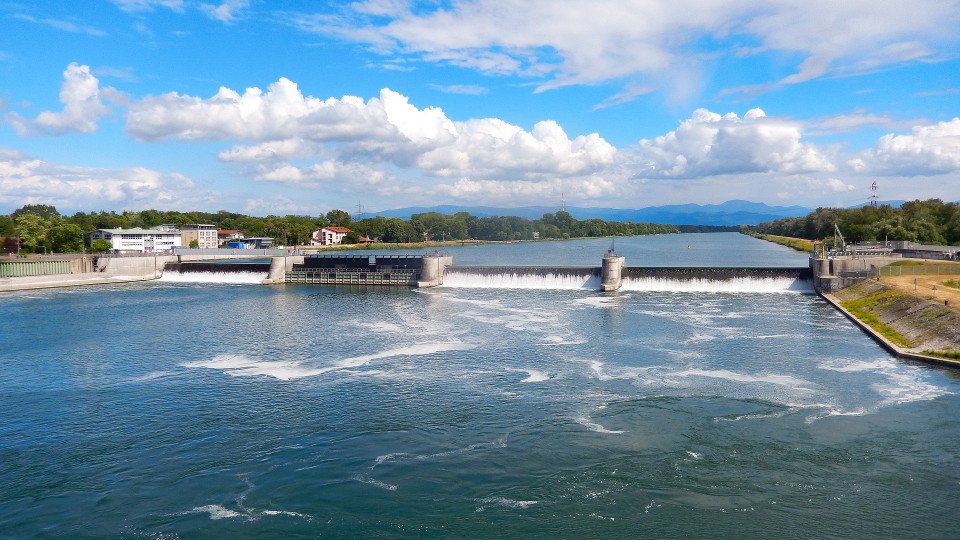
Breisach is a town located in Southwest Germany on the French border. The town is situated in the Rhine Valley on the banks of the river Rhine and dates back over four thousand years. Breisach and its history can be experienced through the City History Museum, which houses a permanent exhibition taking you from Stone Age through the Celtic, to the Romans and Middle Ages, right up to modern day. St Stephen's Cathedral is home to the city’s famous art treasures, the wheel wells, which are housed in the neighbouring Radbrunnenturm with the forty one metre deep water well. The cathedral is also home to many other treasures including the High Altar of Master HL and wall paintings by Martin Schongauer as well as High Gothic and Roman architecture. A visit to the Blue House, the former Jewish Community Centre, is highly recommended. Now owned by the Friends of Former Jewish Community House Breisach it exhibits memorials to Breisach’s Jewish heritage.
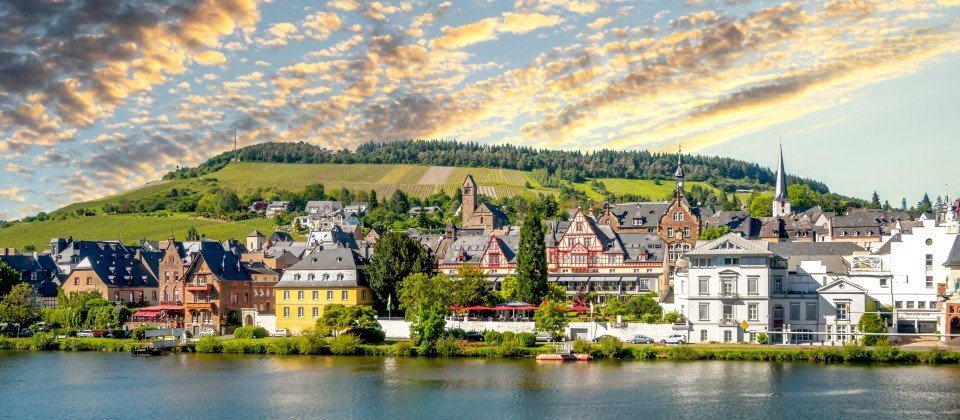
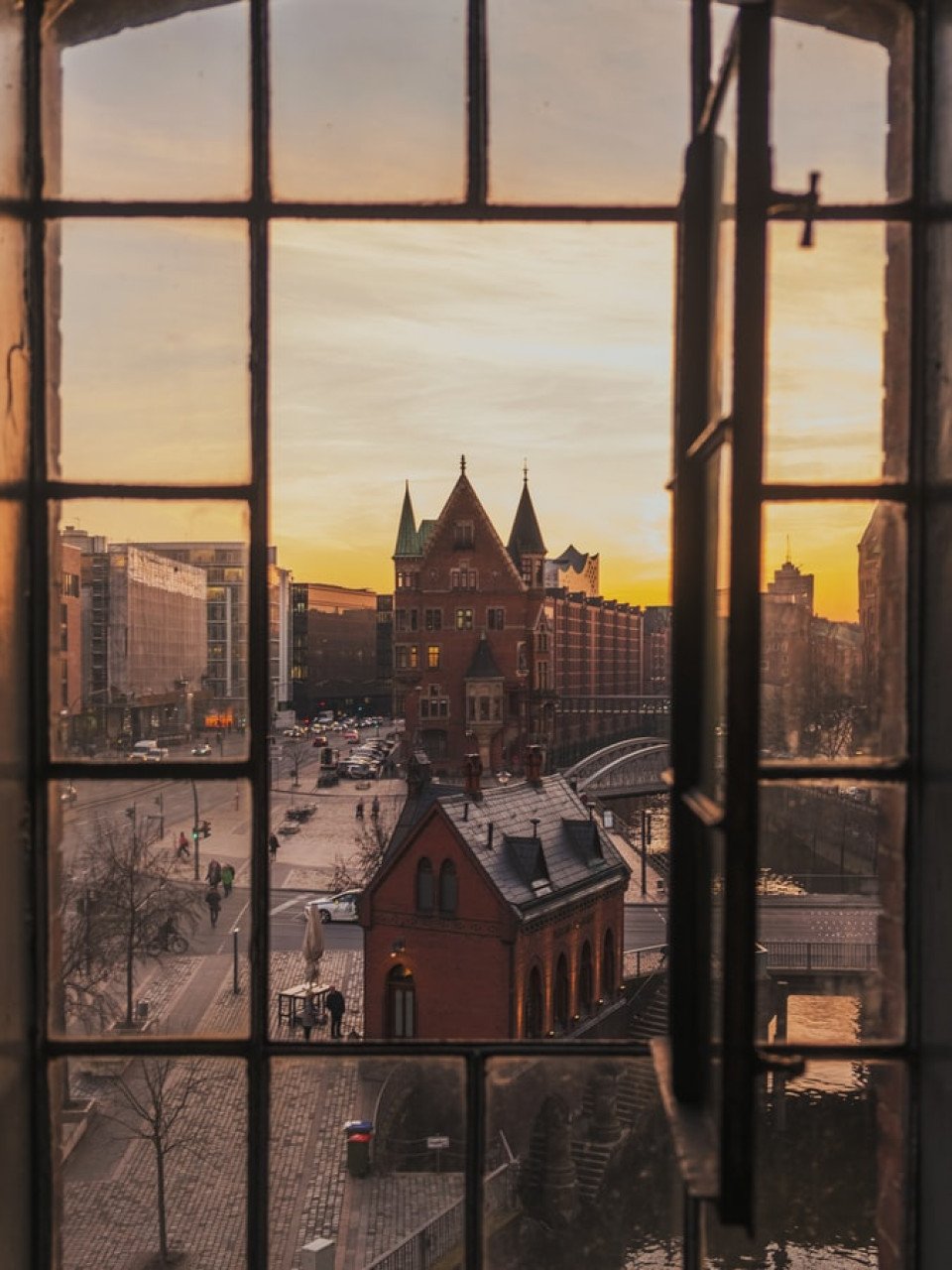
Hamburg is Germany’s second-largest city with a history dating back to Charlemagne. A major port, this vibrant city is home to art and culture, extensive shopping facilities, Baroque buildings and waterfront vistas. With its well-known fish market, art galleries and Museums together with several beautiful parks including a botanical garden, this is a city with something for everyone. British visitors who remember the Swinging Sixties may like to visit the streets around Grosse Freiheit, where an unknown pop group called The Beatles gave their first public performances in various local clubs before achieving worldwide fame.

Bremerhaven was founded in 1139. In 1827 the decision was taken to make this small fishing town a huge deep-sea port, and today Bremerhaven, along with Bremen, forms the smallest of Germany’s federal states. This busy port is still part of the municipality of Bremen, and half of Germany’s fishing fleet deposit their catch here. Bremerhaven’s lighthouse, a famous landmark, dates back to 1853 and is the oldest working lighthouse on Germany's mainland North Sea coast. Bremerhaven is home to the German Shipping Museum, founded in 1971, which houses many interesting exhibits including a well-preserved 14th-century Hanseatic trading vessel, found at the bottom of the River Weser during dredging operations. Another attraction is the German Migration Museum, which tells the stories of Germans who migrated to the New World and of foreigners who have made their homes in Germany.
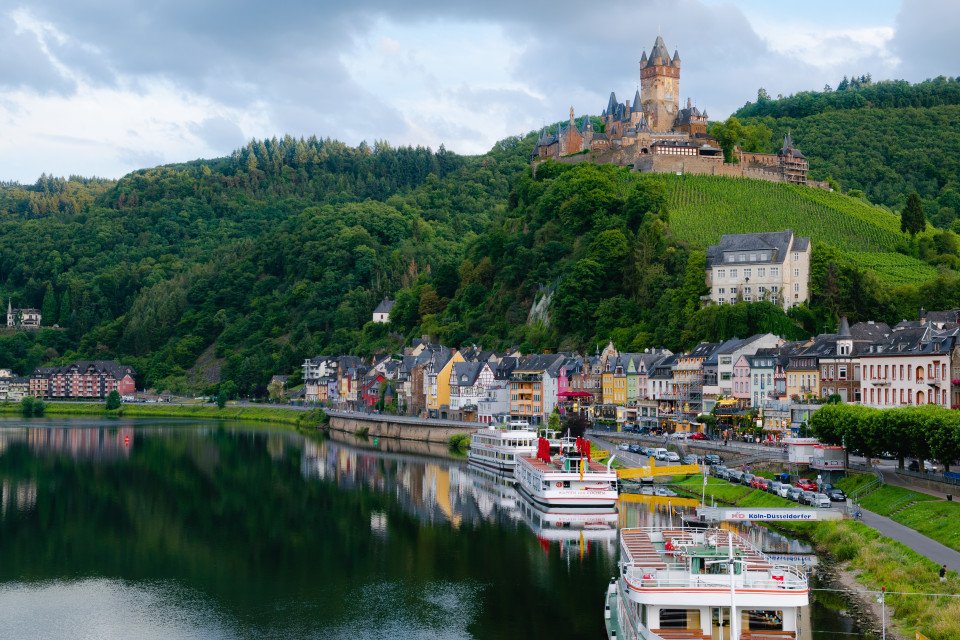
A town characterised by enchanting medieval charm, Cochem sits along the stunning Moselle River in Germany, overlooked by the fascinating hilltop Reichsburg Castle. Cochem's skyline looks as though it were lifted directly from a postcard, decorated with half-timbered houses, charming streets and the Moselle river meandering alongside. A reputable hub for impeccable Riesling wines, Cochem is also famed for its local vineyards, offering visitors a taste of traditional German wine production.
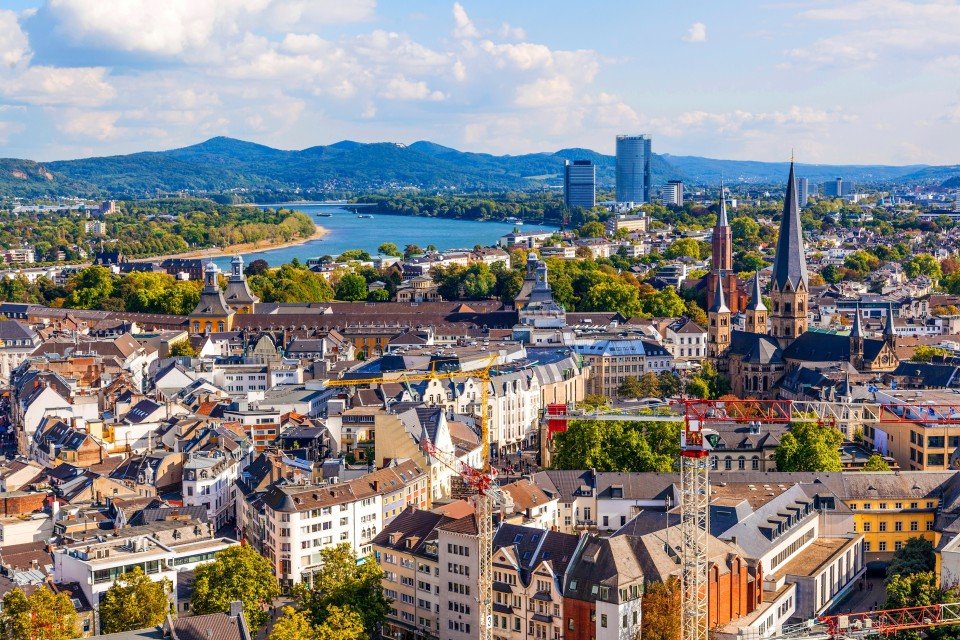
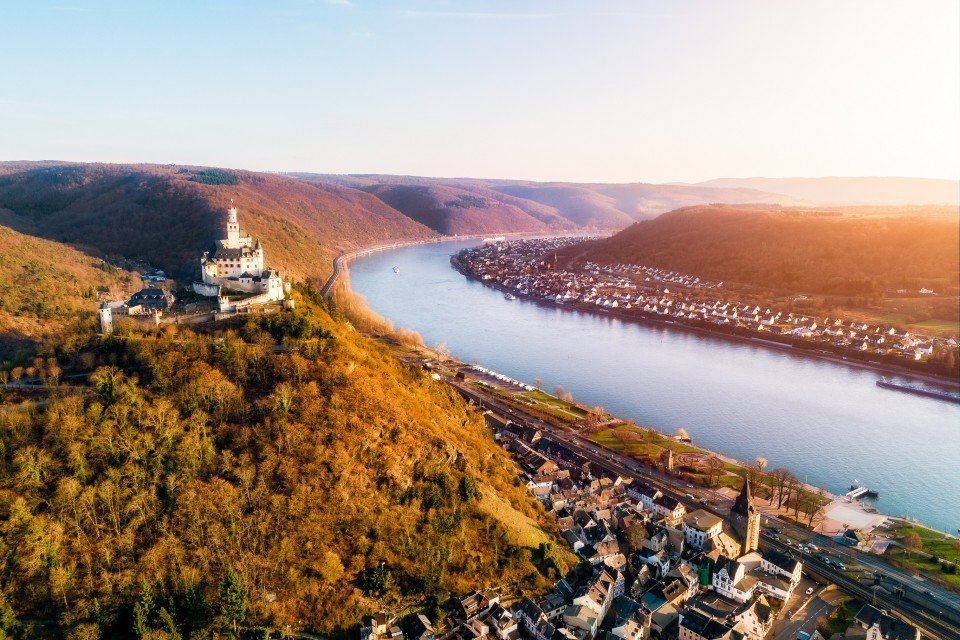
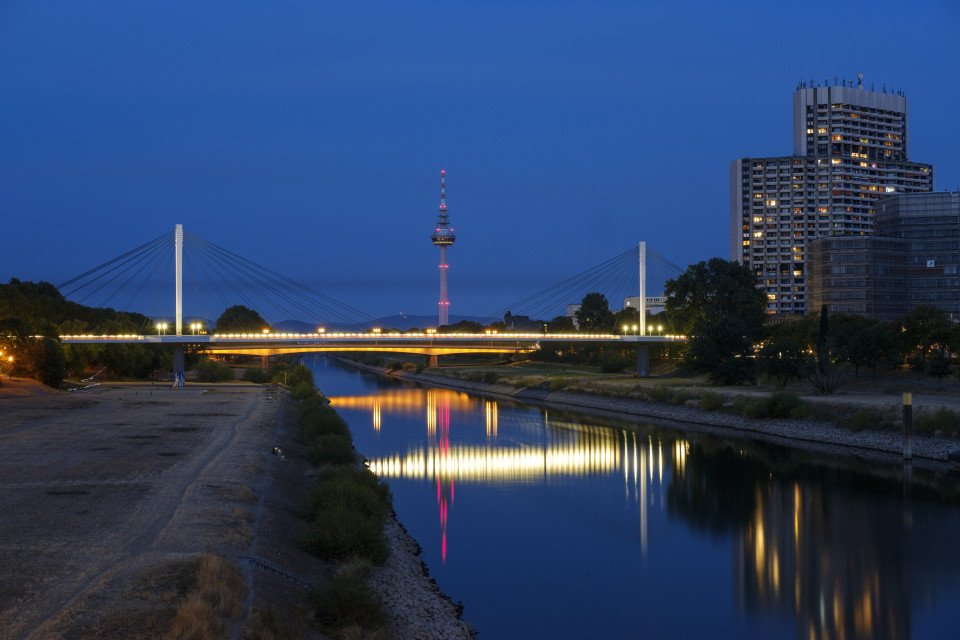
Mannheim, Germany, is a dynamic city known for its distinctive grid layout and vibrant cultural scene. Located at the confluence of the Rhine and Neckar rivers, it features the impressive Mannheim Palace and the lush Luisenpark. The city's modern architecture contrasts with its historical roots, while its thriving arts scene includes theaters, museums, and music festivals. Mannheim is also a key industrial and commercial hub, making it a blend of cultural richness and economic vitality.
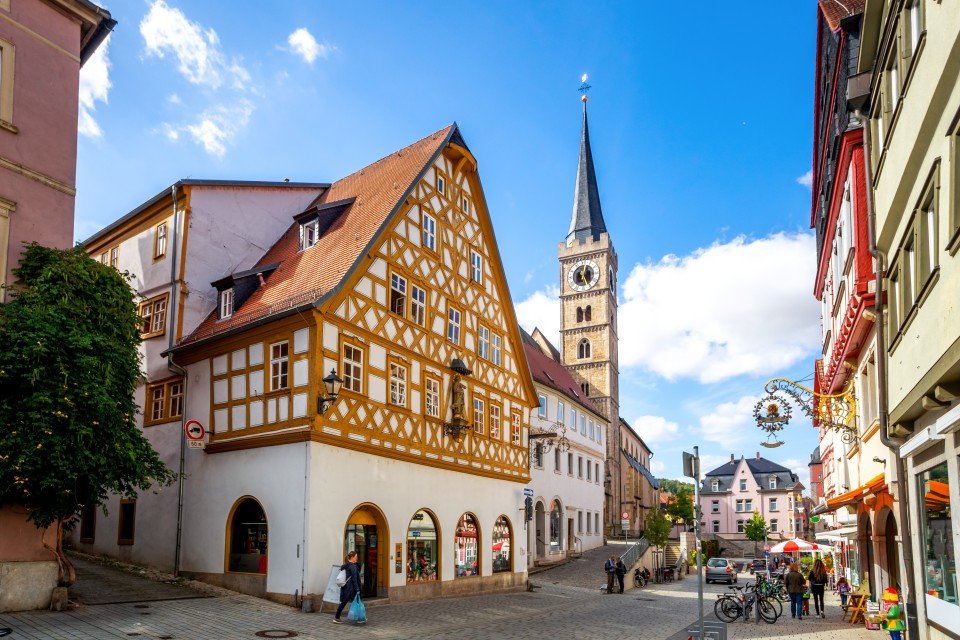
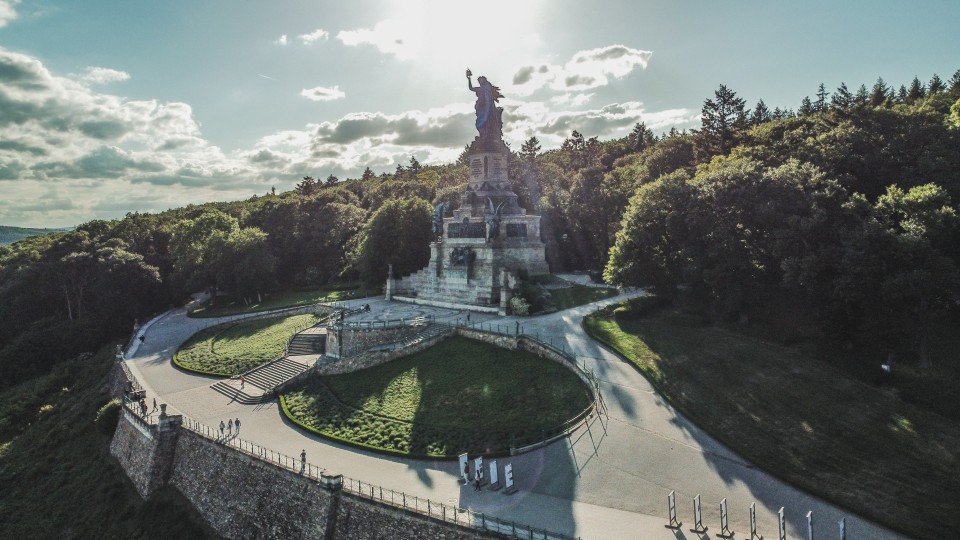
Rudesheim am Rhine is a town in the Rhine Valley in Germany and part of the UNESCO World Heritage Site of Rhine Gorge. It is known for its production of Riesling wine and has been popular for its wine making since ancient times. The Medieval Bromserburg Castle is home to the Rheingau Wine Museum and wine is a crucial part of Rudesheimer culture. The town is surrounded with vineyards and wineries, as well as many local wine bars and seasonal wine taverns. Wine tasting is a must do in Rudesheim and dining out is a great accompaniment. The local cuisine is seasonal and is closely intertwined with the wine growing traditions together with soups such as Zwiebelkuchen, Handkäs mit Musik and Spundekäs. Nordic Walking is popular around town, with five adventure trails around the vicinity, as well as many popular cycling routes. Great views of the town can be found from the water, the cable car to Niederwald Monument and the Monument itself. Old Town has the best examples of the town’s architecture with Eagle Tower, Oberstrasse and Rheinstein Castle some key sites to visit.
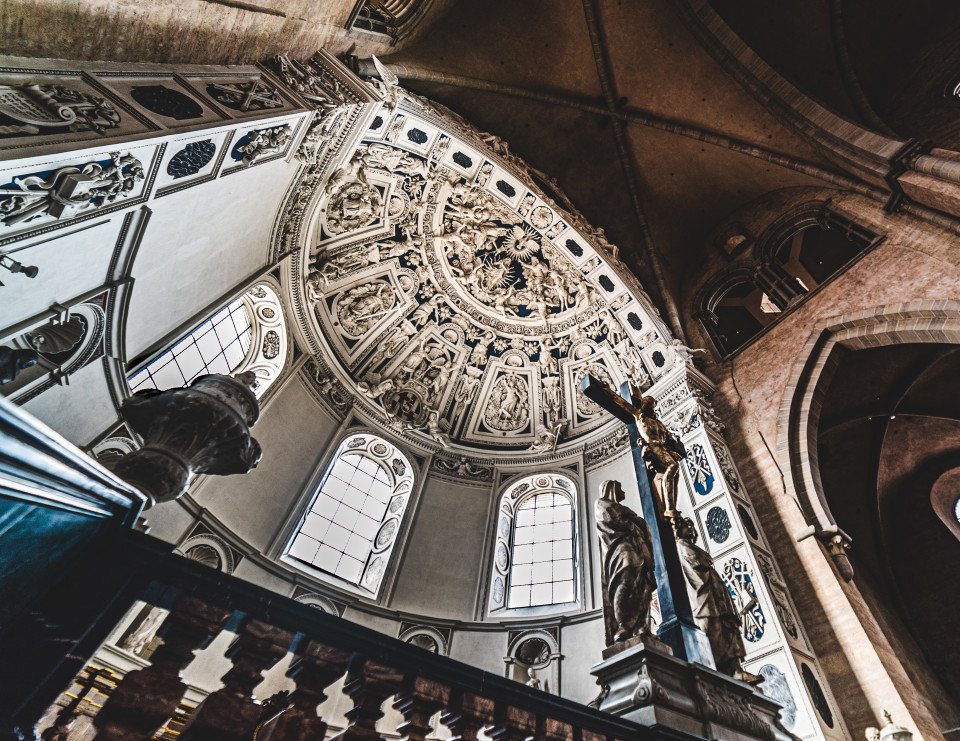
One of the oldest cities in Germany, Trier's rich history dates back over 2,000 years as the former capital of the Western Roman Empire. The city is home to an impressive array of well-preserved Roman ruins, including the iconic Porta Nigra, a massive city gate. What's more, Trier boasts several UNESCO World Heritage Sites, such as the Roman amphitheater and the Imperial Baths. Besides its captivating past, Trier also offers a unique blend of contemporary and traditional elements, with an enchanting old town, lively market squares and a vivid cultural scene.
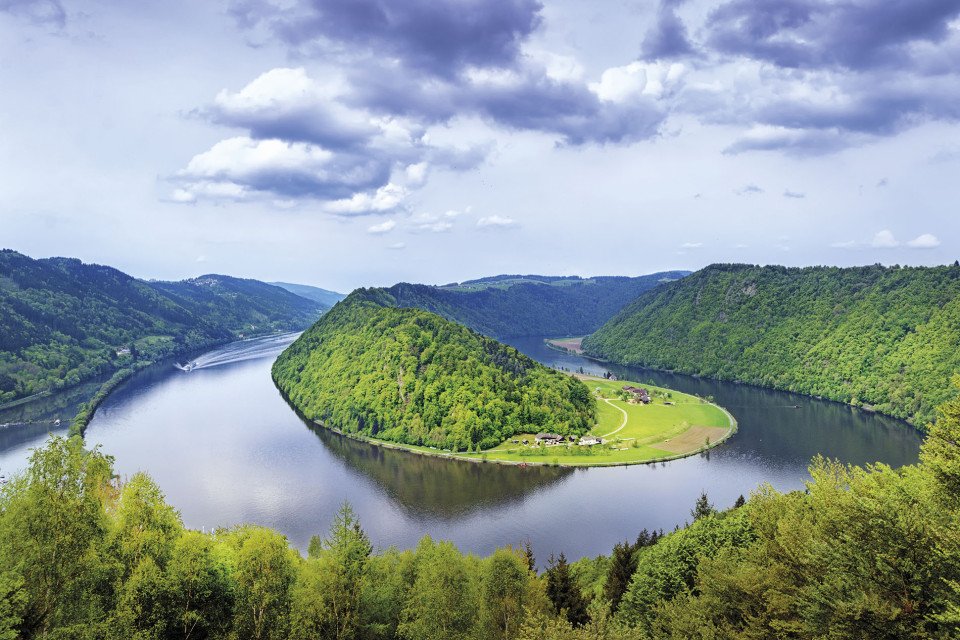
Passau is a German city located in the Southeast of Germany on the Austrian border. It is situated at the confluence of the rivers Danube, Inn and Ilz. The Three Rivers City, as it’s also known, is unique for its three contrasting currents of blue, green and black. Old Town of Passau is home to towering buildings of striking architecture: the majestic fortress Veste Oberhaus, the Pilgrimage Church Mariahilf and St Stephen's Cathedral. Many of Passau’s attractions can be found in this area, including the New Bishop’s Residence, the Gothic Town Hall, as well as many churches and museums. Visitors can stroll along the riverfront promenades and romantic lanes whilst enjoying the picturesque landscape. For modern art, The Museum of Modern Art and Glass Museum Passau are recommended as they offer something a bit different. Theatre and cabaret are a popular evening pastime, with performances at the former Prince Bishopric Theatre or some lively cabaret and Jazz at the Scharfrichterhaus. Visitors will also find many traditional local Bavarian and Austrian cafes and restaurants offering a cosy atmosphere with home cooked food from local produce.
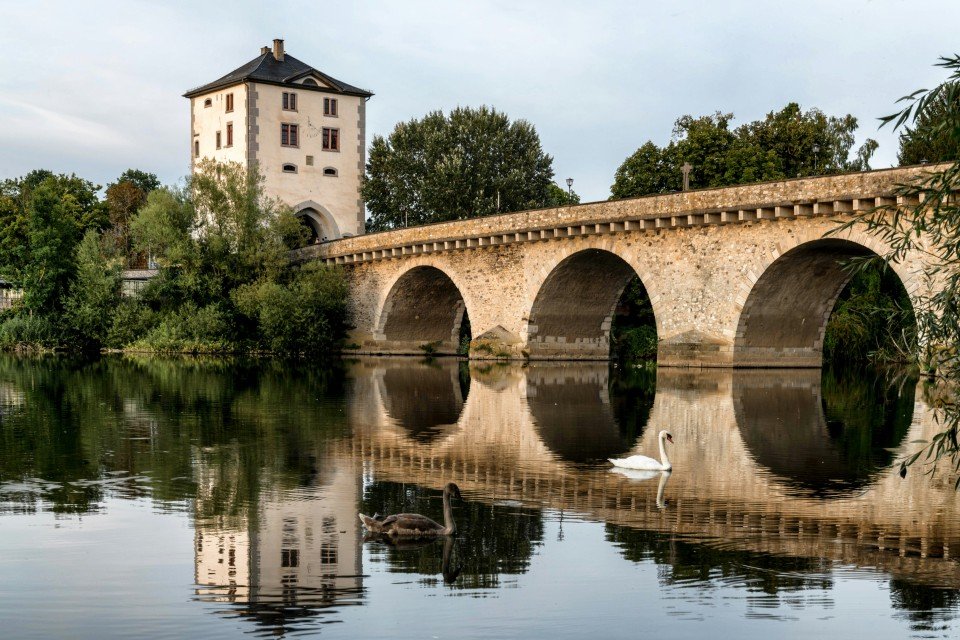
Lahnstein sits at the confluence of the Lahn and Rhine rivers, and is decorated with stunning medieval architecture such as the famed Lahneck Castle. The picturesque German town is bursting with character and rich history, located along the Rhine Gorge and offering a serene experience for visitors exploring Germany.
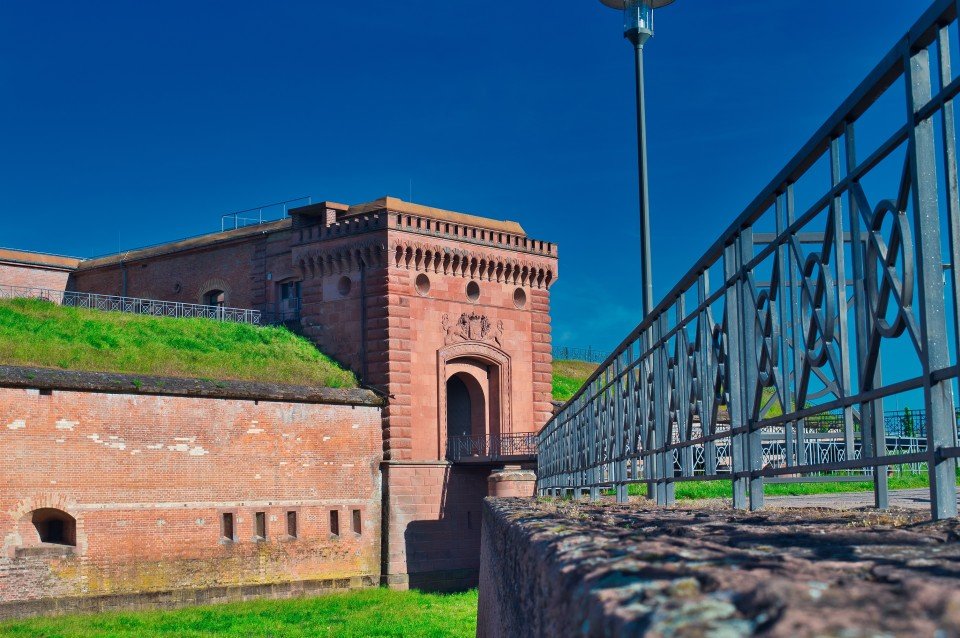
Germersheim is a town in the German state of Rhineland-Palatinate, of around 20,000 inhabitants. It is also the seat of the Germersheim district. The neighboring towns and cities are Speyer, Landau, Philippsburg, Karlsruhe and Wörth
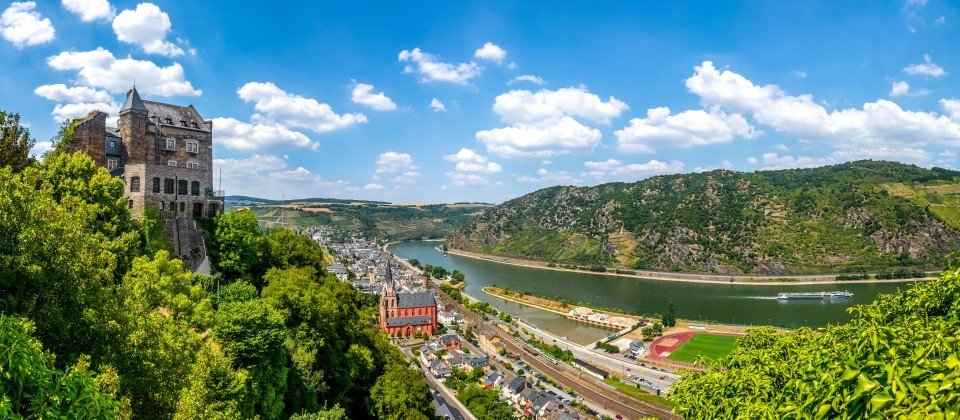
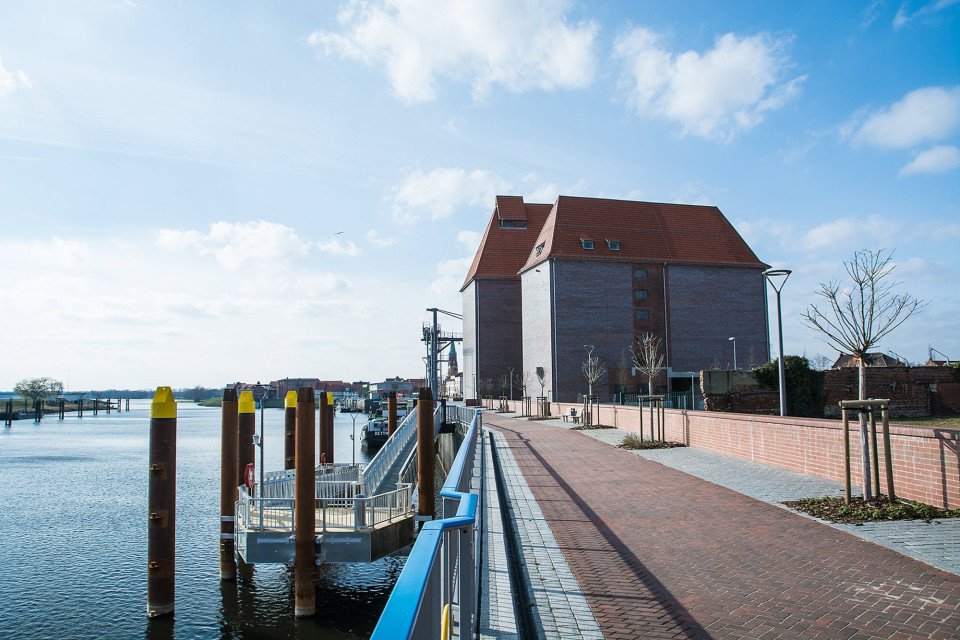
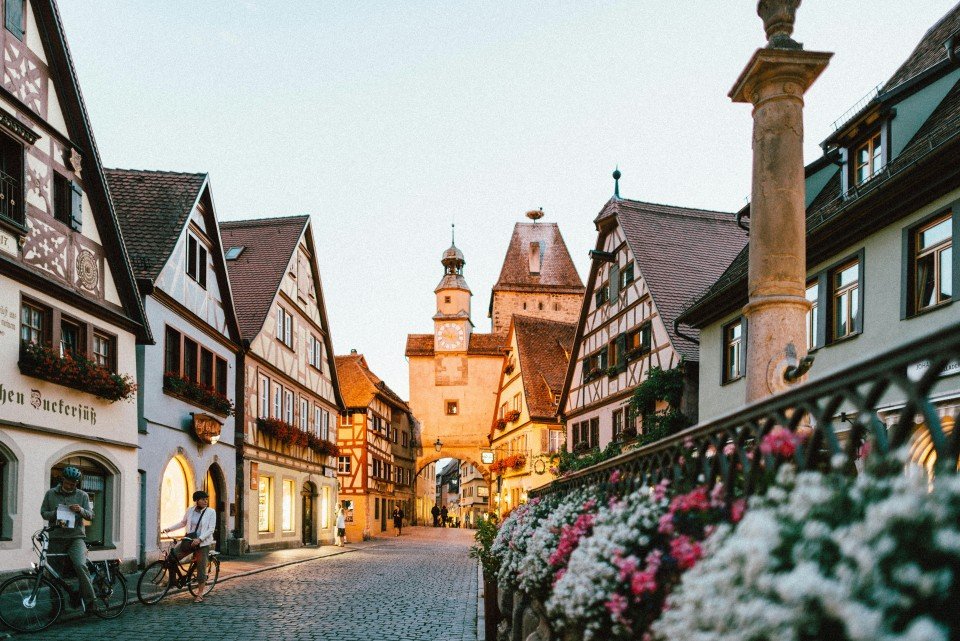
Located at the confluence of the Tauber and Main rivers, Wertheim is a German town best known for picturesque medieval architecture, including the impressive Wertheim Castle overlooking the quaint Old Town. The cobblestone streets are testament to the town's rich history, and the timber-framed houses paint a vivid picture of Germany's past.
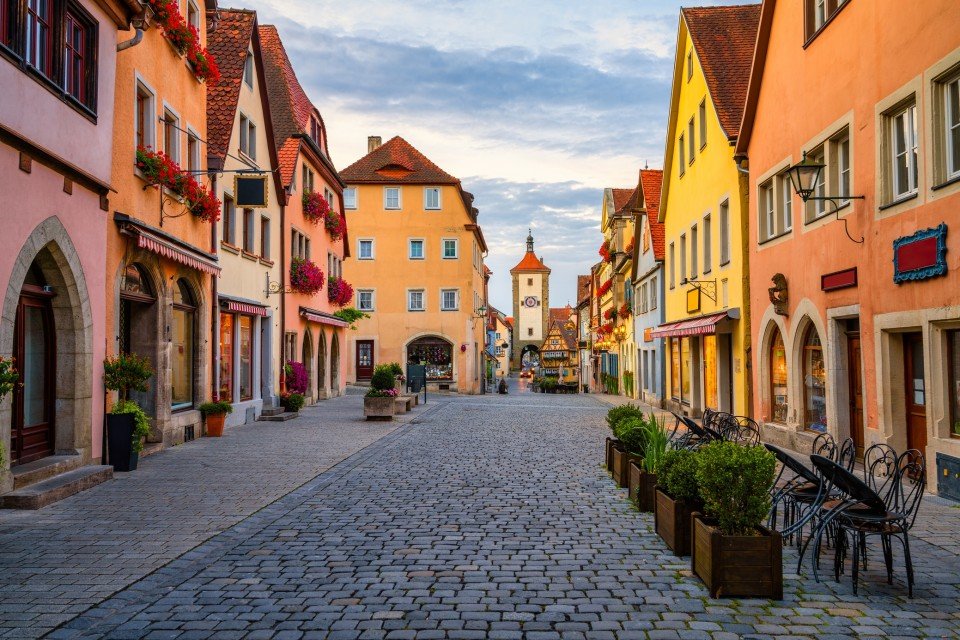
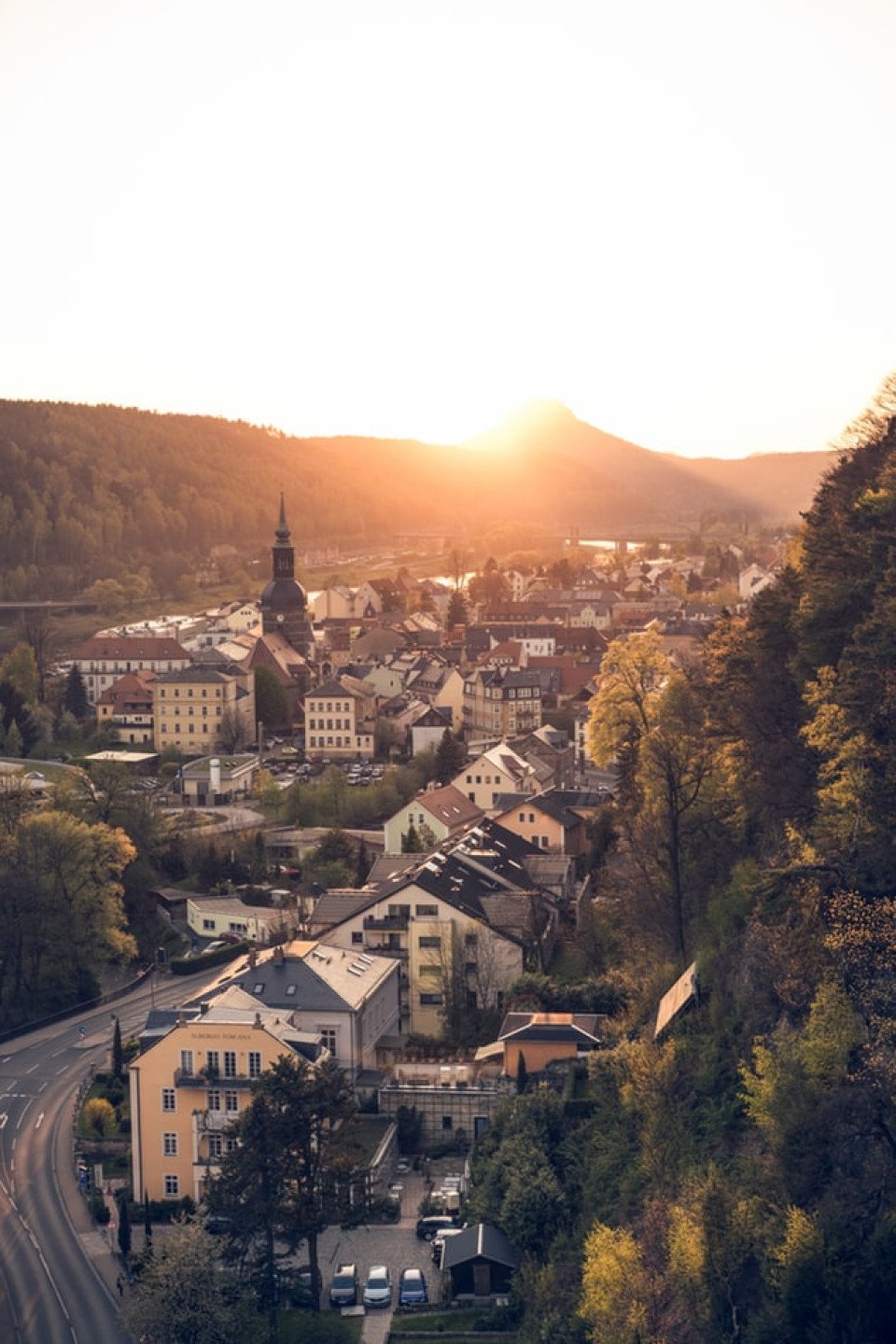
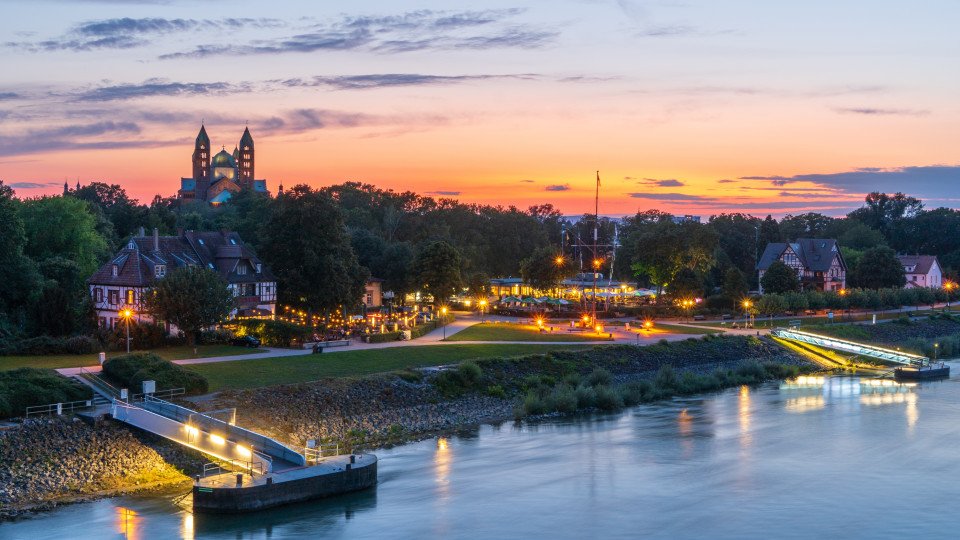
Speyer is a town located in southwest Germany situated beside the river Rhine. Originally founded by the Romans, it is one of the oldest settlements in Germany and is situated in the popular wine growing region of the Palatinate. A key attraction of Speyer is the Historical Museum of the Palatinate, which is one of the most celebrated culture-history museums in Germany. It features five permanent collections including Prehistory, Roman Times, Cathedral Treasury, Modern Era and Wine Museum. Not far from the museum, visitors will find the Imperial Cathedral, a UNESCO World Heritage Site, which is considered the largest preserved Romanesque church in Europe. Originally constructed by Konrad II, this magnificent and looming building was intended to demonstrate the Lord’s religio-political claim to power against the papacy. Speyer has been producing wine since its Roman beginnings and wine tasting, festivals and events are popular all year round. The town is popular for outdoor activities such as hiking and cycling as well as guided walking tours of the town.
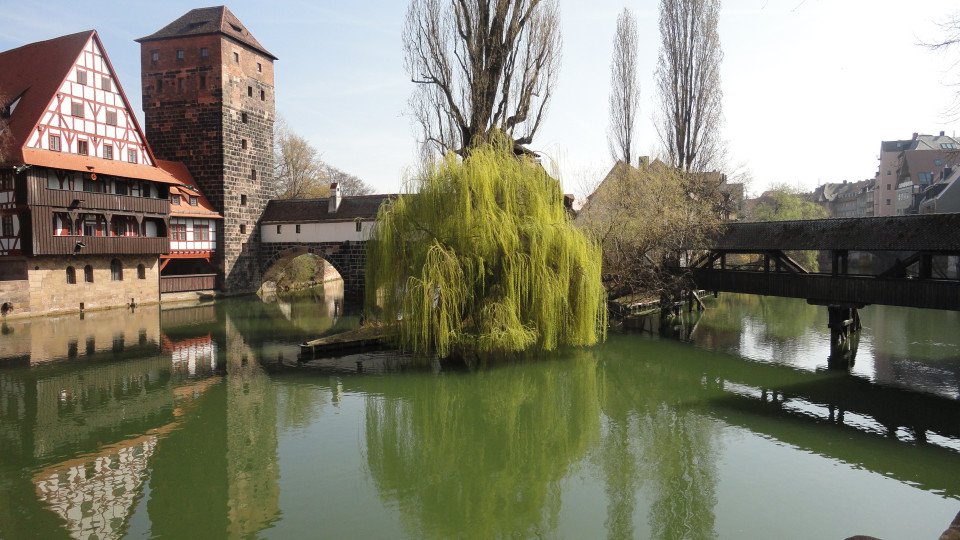
Nuremberg is a medieval city located in northern Bavaria in Germany. It is Bavaria's second largest city and is noted for its iconic red roofed buildings and medieval architecture. The imperial Castle overlooks Nuremberg and was one of the most important fortifications of the Roman Empire. For more significant cultural history, the Germanisches Nationalmuseum, one of the largest cultural history museums in the German speaking world, offers visitors exhibitions from Prehistoric all the way to present day. Walking tours around the city offer an enjoyable and active way to learn of Nuremberg’s history and culture. Through Old Town, discover fountains, wells, churches, and art treasures, as well as learning of the colourful past and cosmopolitan present of the city and its people. Nuremberg is also home to one of the oldest Christmas markets in Germany, the Nuremberg Christkindlesmarkt, where visitors can purchase traditional handmade decorations and enjoy the famous gingerbread, mulled wine, and grilled sausage from over one hundred and eighty wooden stalls.
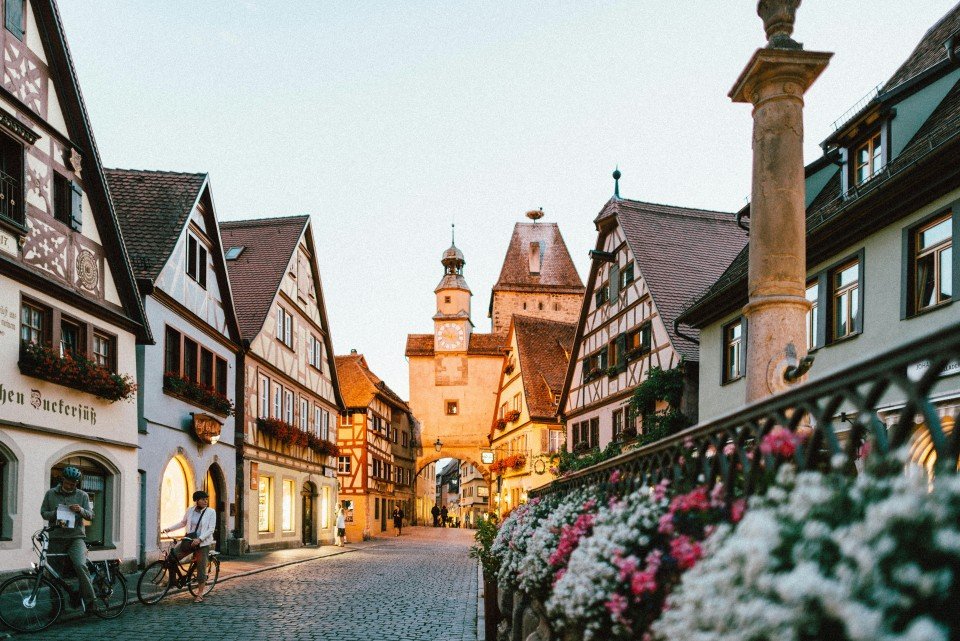
In the heart of Bavaria, Roth is home to charming streets, historic architecture and lush countryside, offering a tranquil retreat for visitors looking to explore nature and appreciate the outdoors. Famed for its annual world-renowned Challenge Roth triathlon, the town draws athletes and spectators from all over the world, bolstering community spirit.
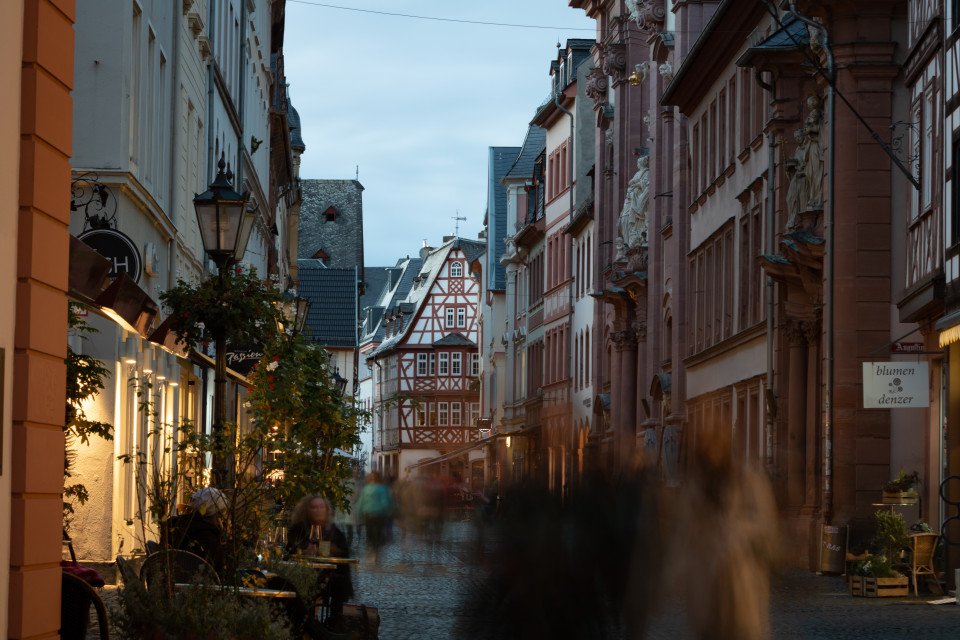
Situated on the banks of the Rhine, Mainz is a German city with an intricate history dating back to the Roman era, as the capital of the Rhineland-Palatine state. Celebrating its cultural heritage, Mainz is home to several iconic landmarks that represent the city's historical significance, including the Mainz Cathedral, the Old Town and the Gutenberg Museum, which honours the inventor of the printing press.
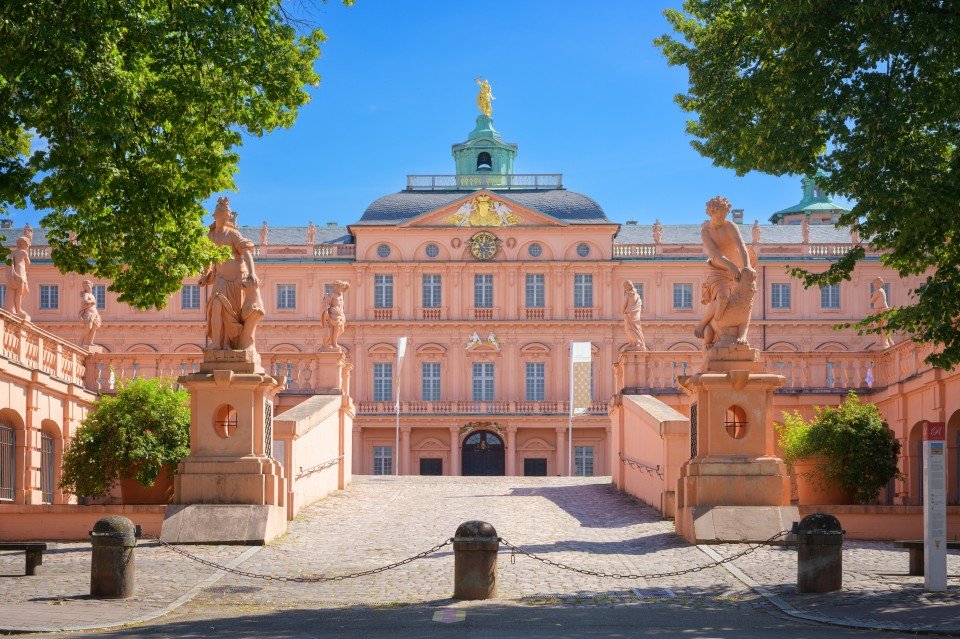
Rastatt, Germany, is a charming town in the Baden-Württemberg region, known for its Baroque architecture and historic significance. The centerpiece is the Rastatt Palace, a stunning example of Baroque grandeur with its beautiful gardens. The town offers picturesque streets, vibrant markets, and a rich cultural scene. Located near the Rhine River, Rastatt combines historical charm with a lively atmosphere, making it a delightful destination for exploring its architectural heritage and enjoying its local culture.
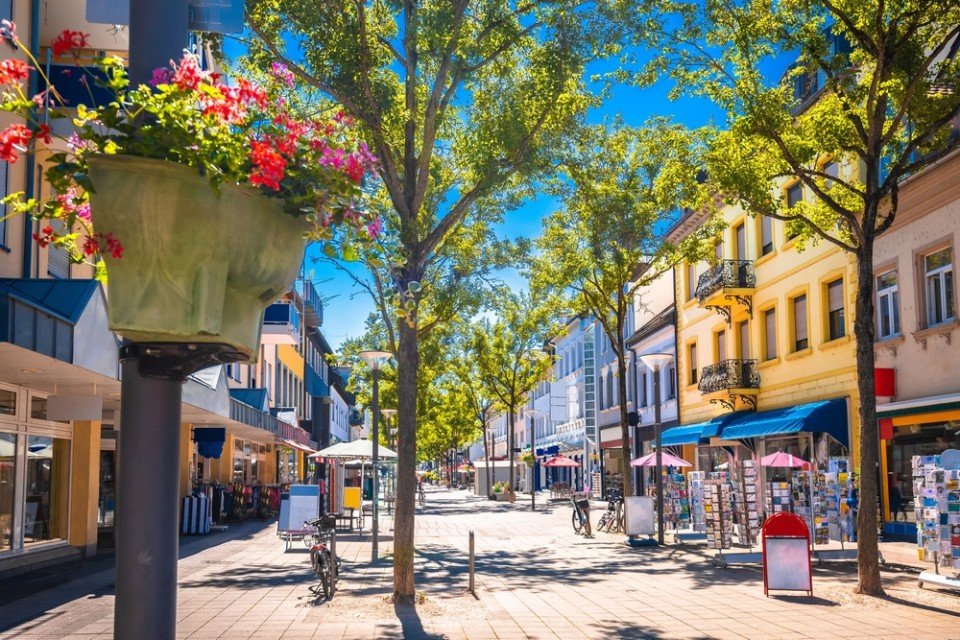
Kehl is a town located in southwest Germany on the River Rhine, across from the French City of Strasbourg. The town is not known as a tourist destination, however it benefits from idyllic landscape and a water-rich environment. Walk or cycle along the Reinpromenade or the garden of the Zweubüchter and enjoy a picnic at one of Kehl’s numerous excavation lakes. Nature lovers will enjoy spotting animals hiding along the rivers, lakes and bushes. Discover Kehl’s turbulent war and peace history with a guided tour of the centre and its surrounding villages. Visitors will also experience the town’s habitat and culture which is characterised through the half timbered houses and streets. Kehl town centre features a large pedestrian zone with many retail outlets, street cafes and outdoor dining to enjoy. A few minutes by public transport and visitors will find themselves in the centre of metropolitan Strasbourg.
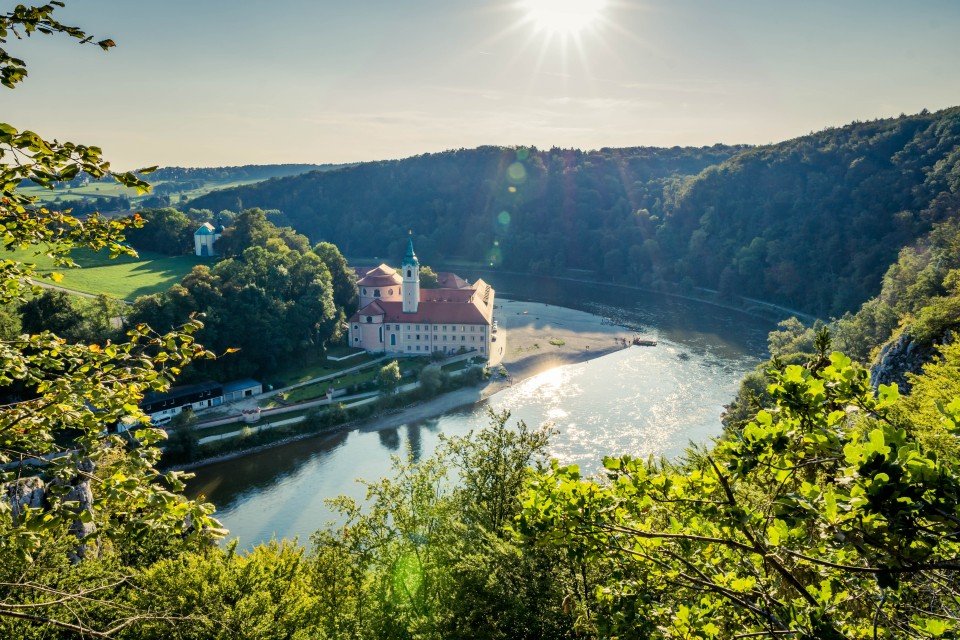
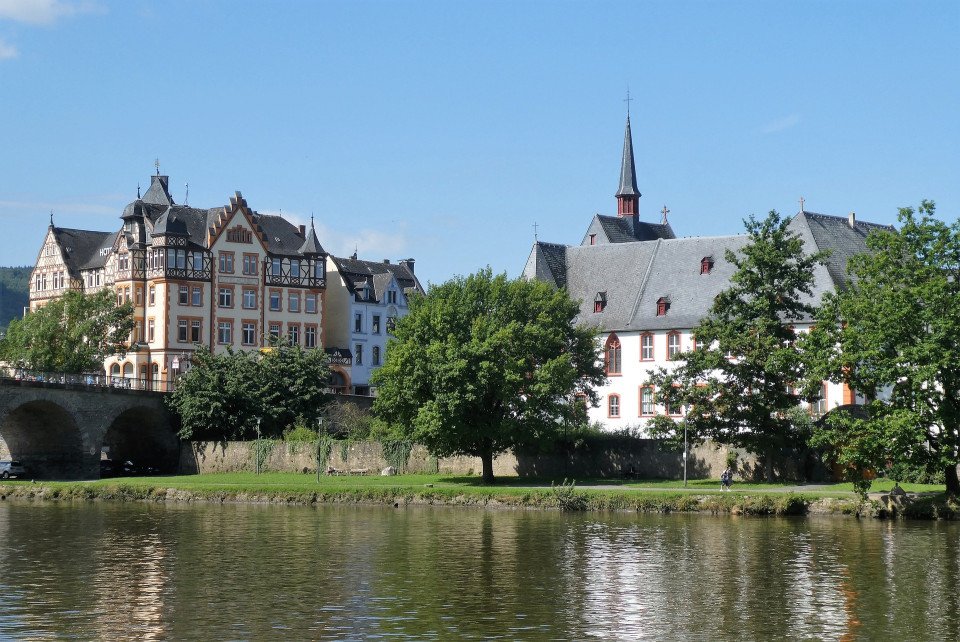
Bernkastel-Kues is an enchanting fairytale town situated along the Moselle River, Germany, with streets paved with cobblestone and lined with half-timbered houses. Famed for its medieval architecture, the lively market square is home to the iconic Spitzhäuschen (Pointed House), a narrow, gabled timber-framed building dating back to the 15th century. Alongside its rich cultural heritage, the town is renowned for its vineyards and wine production, offering its visitors delightful wine-tasting experiences and stunning views of the surrounding vine-covered hills.
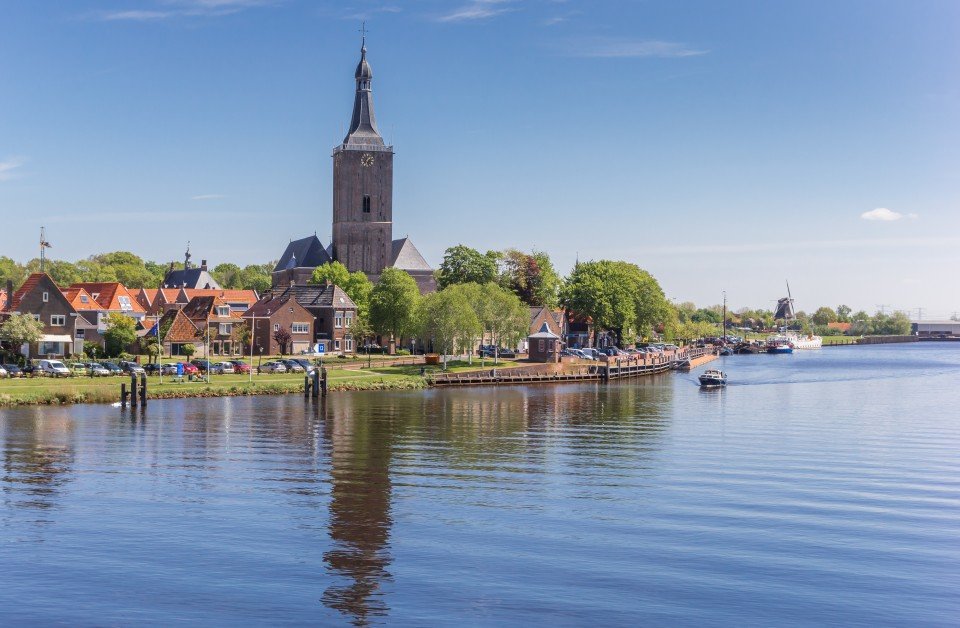
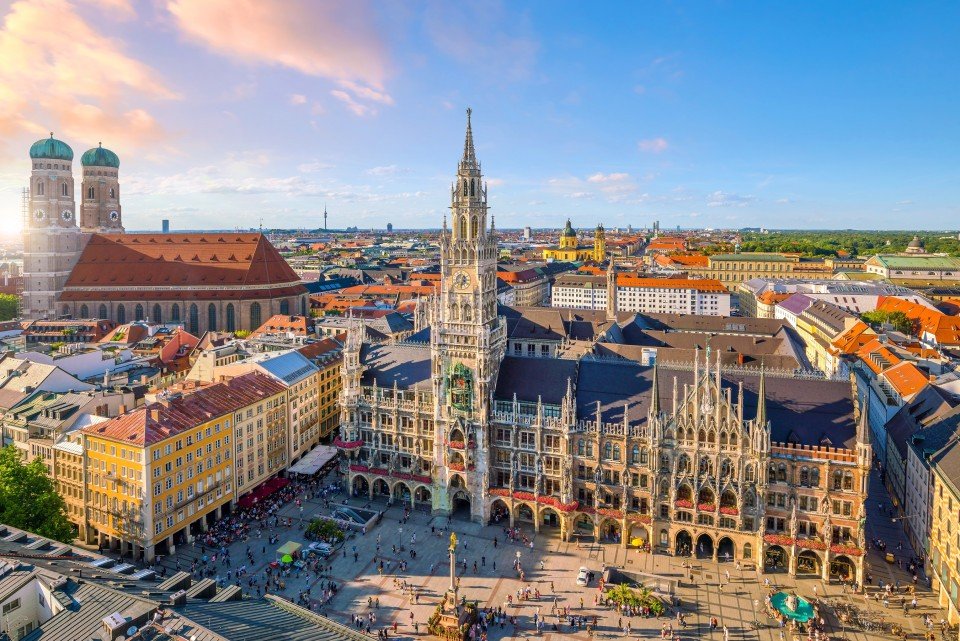
The third largest city in Germany, and one of the most prosperous and fastest growing, Munich is a city characterised by its lively energy blended seamlessly with its tranquil atmosphere. For tourists looking to explore the city and discover its rich history, or for those interested in the finest beers, stunning views or mind-blowing cuisine, Munich is host to an incredible variety of beer gardens, museums, parks, lakes, historical sites, retailers and restaurants, meaning that there really is something for everyone in Munich.
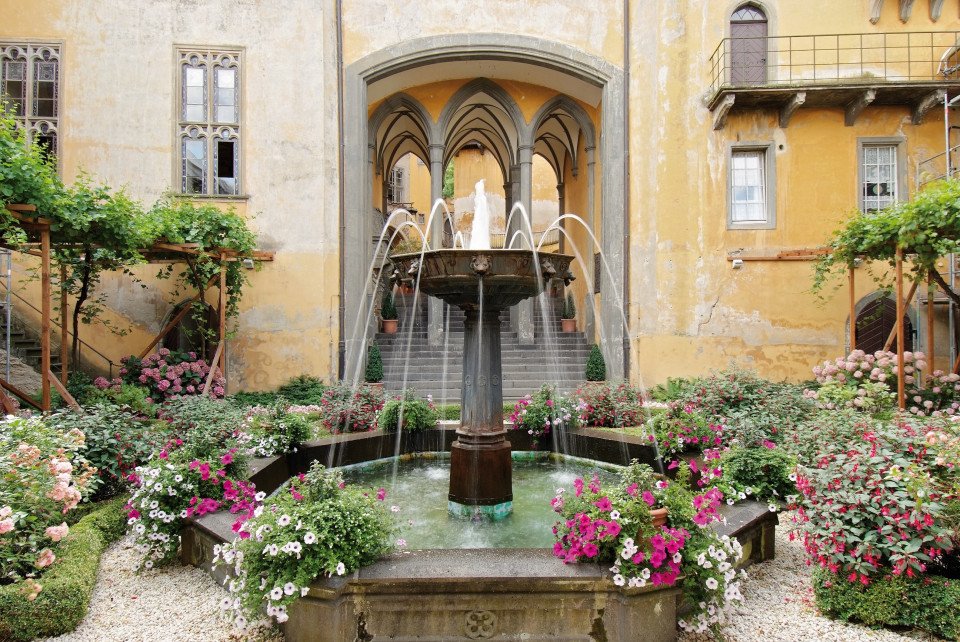
Located in the West of the country, Koblenz is one of the oldest cities in Germany. It is situated on both banks of the river Rhine, at its confluence with the Moselle River. The beginnings of Koblenz can be traced back to its military beginnings around 8 BC. The city is rich in its history and heritage and is easily explored on foot. Take the cable car crossing over the river Rhine for spectacular aerial views or enjoy the city from the one thousand year old fortress, Ehrenbreitstein. The upper middle Rhine Valley is a UNESCO World Heritage Site and its unique landscape can be enjoyed and discovered through the interactive multimedia journey at the Romanticum. Historical and architectural sites of interest include Stolzenfels Castle, the Electoral Palace of Koblenz and Old Town. From the romantic winding streets and small squares of Old Town, stroll through the alleyways from the Church of the Holy Virgin to the St Kastor Basilica and enjoy the picturesque buildings and squares along the way. Koblenz is also very popular for its Riesling and strong Spatburgunder wines since the Romans introduced it two thousand years ago.
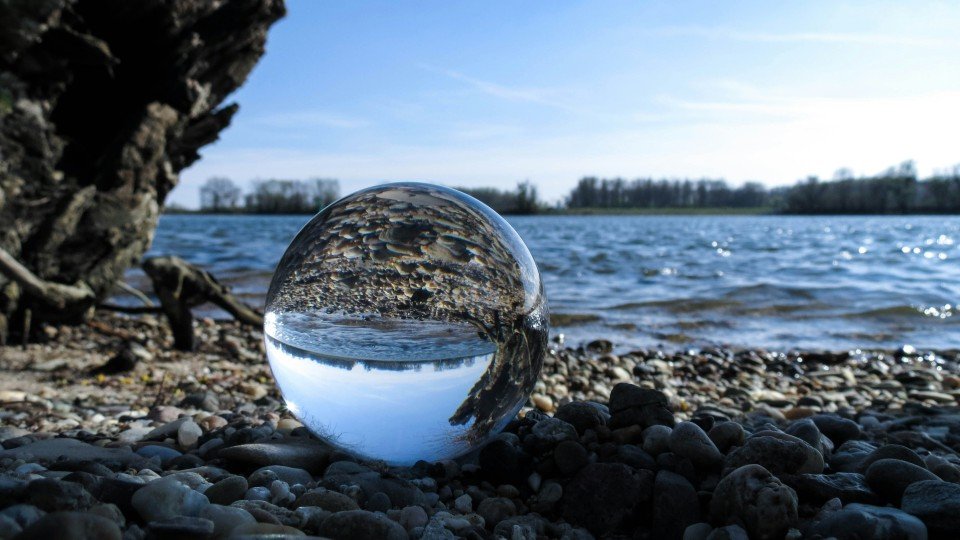
Deggendorf is a city and district capital located in Bavaria in Southeast Germany. The city is situated on the banks of the river Danube which provides a natural border from the south. Deggendorf is populated with many hills, creating plenty of outdoor space to walk, cycle, horse-ride, and hike around or downhill and cross country skiing in the winter months. The wooded mountainous backdrop to this city has given Deggendorf its title as the Gateway to the Bavarian Forest and visitors can enjoy panoramic views of the countryside between the Danube and the Bavarian Forest. Head back down into the historical town centre and pass through the Spitaltor town gate where Deggendorf’s first iconic landmark can be seen: the Church of St Peter and St Paul. Further into the centre is the Old Town House, featuring its Gothic tower and original night watchman's apartments. As well as historical sites, Deggendorf offers traditional Bavarian hospitality and a lively atmosphere in its bars and restaurants, together with the city square and broad market streets for modern and traditional shopping.
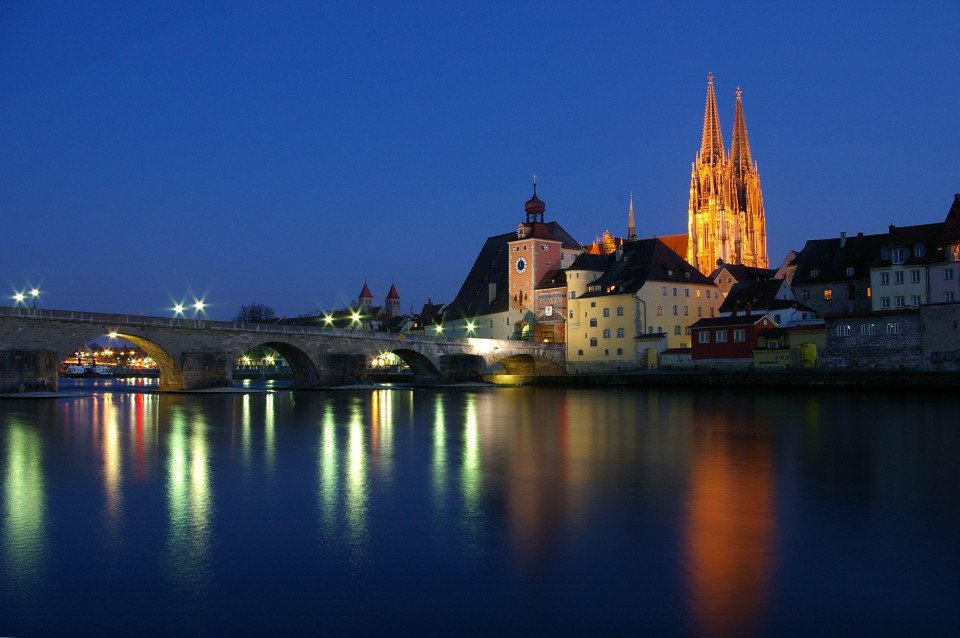
Regensburg is a medieval city of Bavaria in southeast Germany. It is situated on the northern point of the Danube River at its confluence with the Regen and Naab rivers. The city is famous for its iconic 12th Century stone bridge and sixteen arches, crossing the Danube into Old Town and is the oldest preserved bridge in Germany. Regensburg is also noted for its 13th Century Regensburg Cathedral and Gothic twin spires that feature prominently on the city’s skyline. Recently awarded UNESCO World Heritage status, the city is home to many preserved sites. Visit the the 2nd Century Porta Praetoria which served as the north gate to a Roman camp and St Peter’s Cathedral, with its French Gothic architecture. Also the 18th Century Thurn and Taxis Palace and the Old Town Hall, which is now home to the Imperial Diet Museum, are also worth a visit. Regensburg benefits from lots of parks and gardens for visitors to relax in, as well as walks and cycle paths along the banks of the rivers.
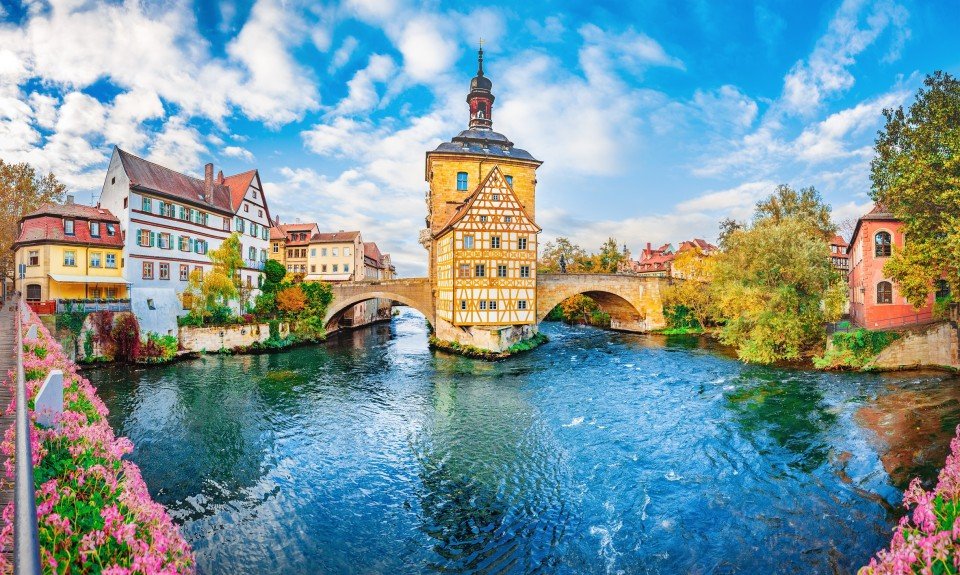
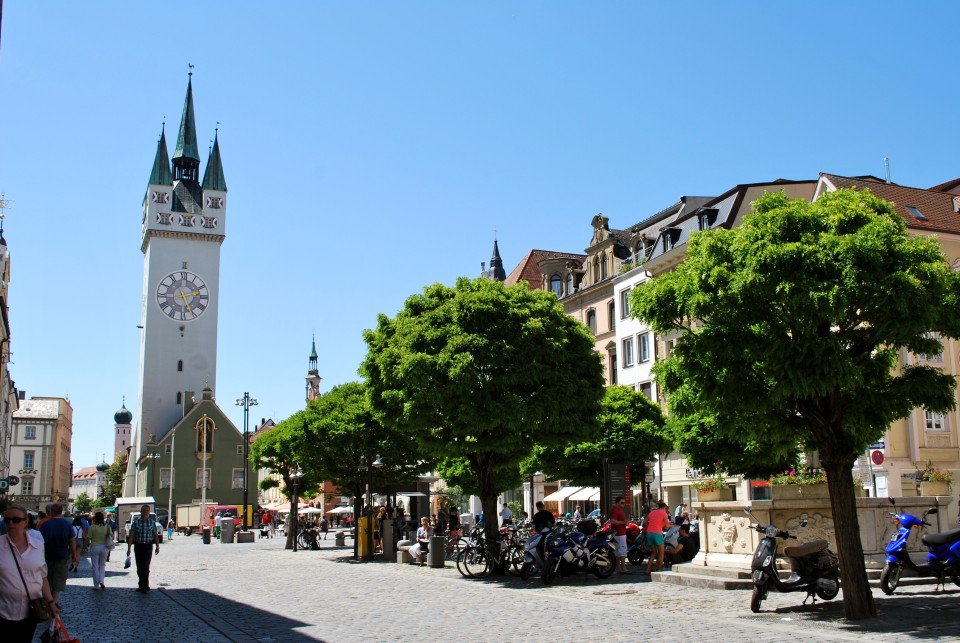

Cologne is a city in western Germany located across the Rhine river. It is the oldest in Germany, dating back 2000 years and is considered the region’s cultural hub. The city is known for its iconic landmark of the twin-spired Cologne Cathedral set against the reconstructed Old Town buildings. When in Old Town, visit the historic Old Town Hall and the Roman Church Great St Martin, or take time out and sit at one of the traditional breweries and enjoy the scenery around you. Historical sites such as the Roman Dionysus mosaic and the medieval Overstolzenhaus are worth a visit too. Another iconic sight in Cologne is at Hohenzollern Bridge. Here, local and tourist couples affix padlocks to the railings of the bridge and swear their loyalty to each other, they then throw the key into the Rhein to ensure everlasting love. Cologne is home to over 30 stages providing cabaret, free ensembles, theatre and dance and also celebrates its openly gay culture.
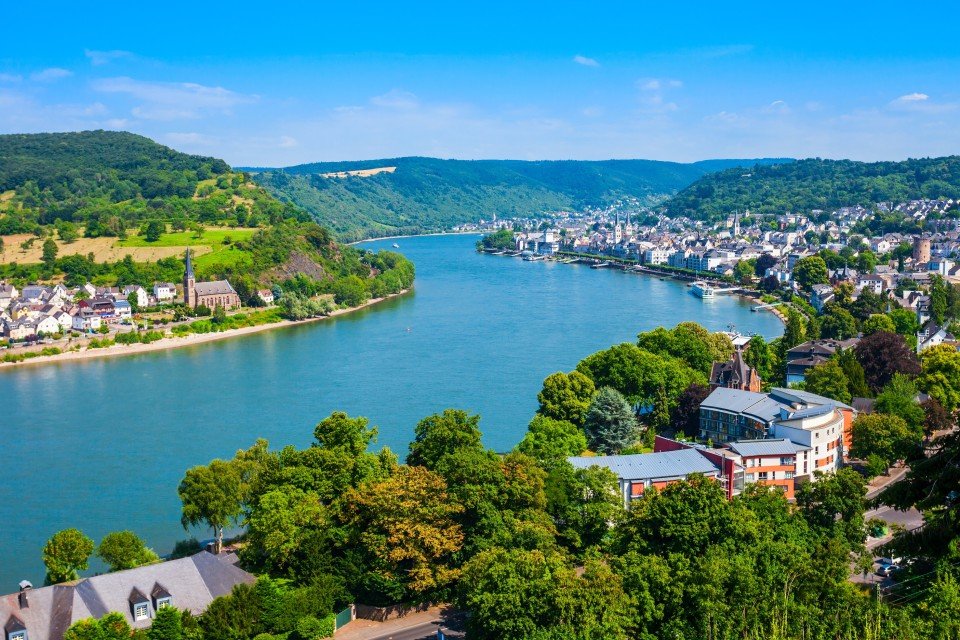
Boppard, Germany, is home to the iconic Romanesque St. Severus Church, a well-preserved medieval building that exudes timeless elegance and captivates visitors, situated along the scenic Rhine River. Surrounded by picturesque vineyards, stretching along the Rhine Valley hillsides, the town is known for its fine wine production, drawing attraction from wine enthusiasts worldwide. Boppard offers historical charm combined with natural beauty, complemented by warm German hospitality, making it a must-visit destination.
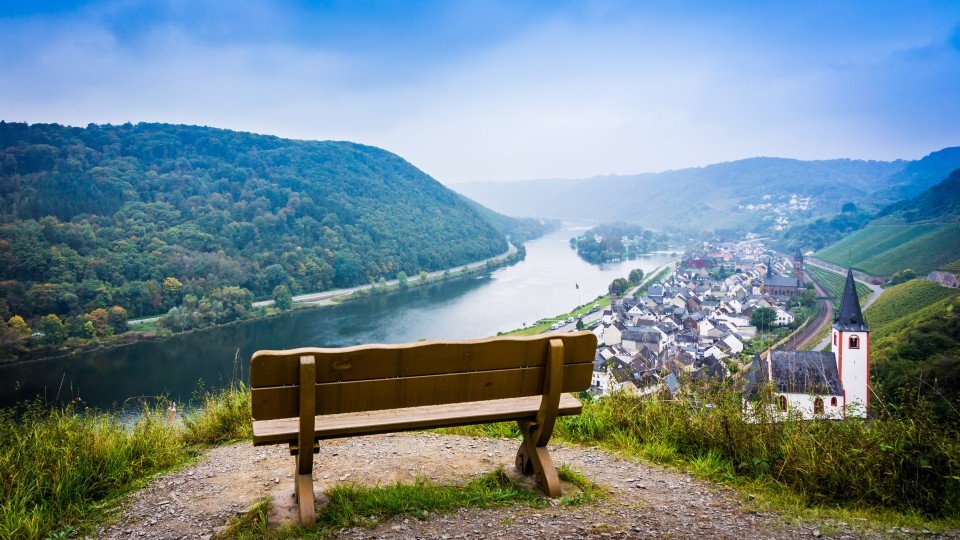

Bamberg is a German town located over a landscape of seven hills and the confluence of Regnitz and Main rivers. The town is a UNESCO World Heritage Centre with Old Town home to structures dating back to the 11th century. An iconic landmark to visit in Bamberg is the town hall Altes Rathaus, located on an island in the Regnitz and covered in murals. Bamberg Cathedral, with its four towers and numerous stone carvings, is a striking example of Romanesque architecture. Head to the Market Gardeners District and visit the historical houses where centuries ago the town gardeners would grow and export produce such as onions, seeds and liquorice. In the town centre and heart of Little Venice, the rivers and arched bridges connecting the island city are reminiscent of Venice, with a lively atmosphere and modern shops set in historical surroundings. After a day shopping, head to one of the many Brewery pubs for some popular German beer. Bamberg is famous for its beer and is where its name originated from, with the town being populated by nine traditional breweries.
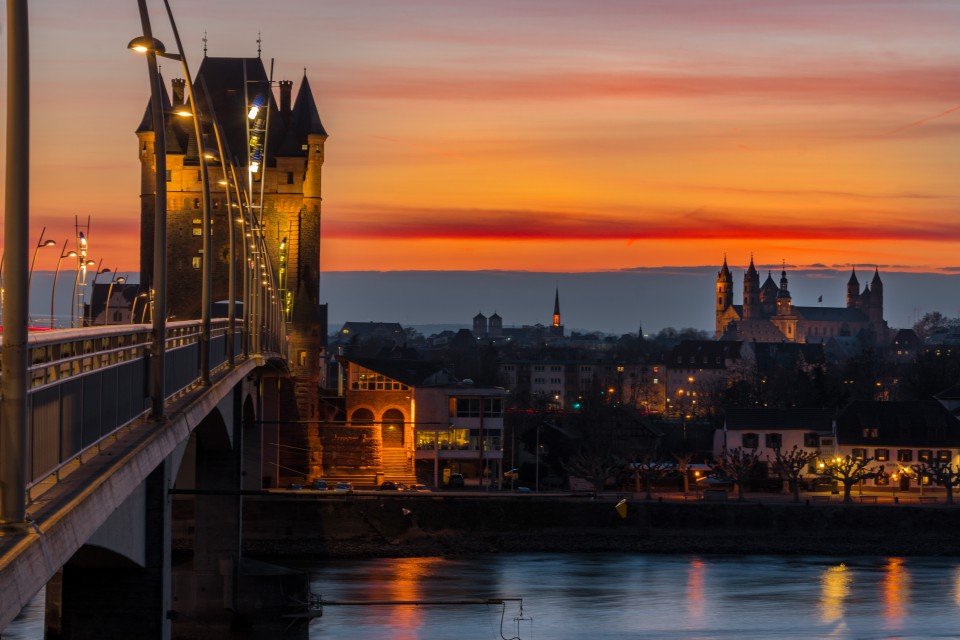

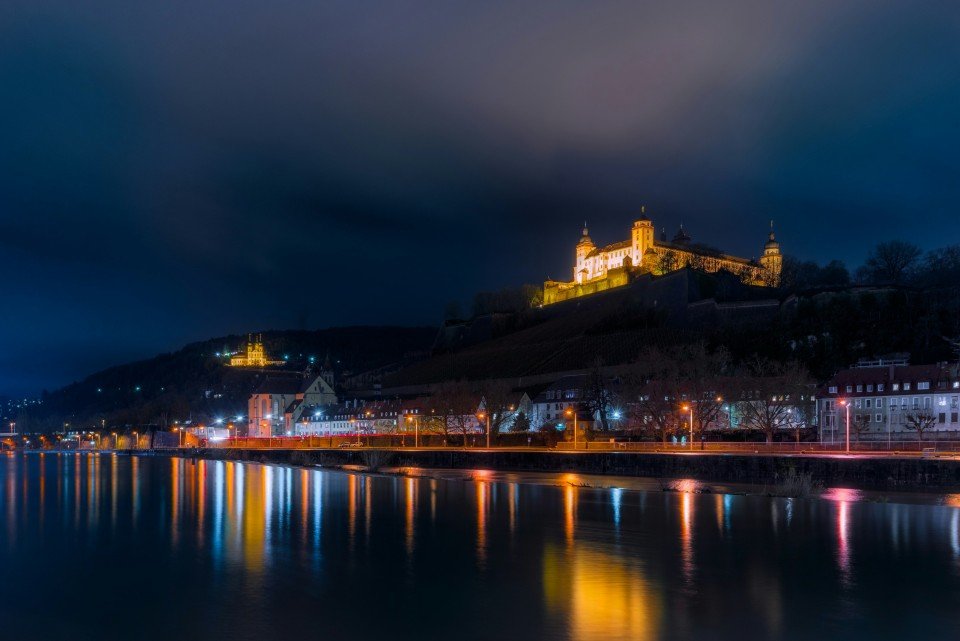
Würzburg is a city in Bavaria in southern Germany. It is located on the River Main and is famous for its lavish baroque architecture and Franconian wine. The Residence Palace is a UNESCO World Heritage Site and is highly recommended. It is a well known example of Baroque architecture with its acclaimed staircase, impressive frescos and imperial hall. Other impressive sites in Würzburg include the towering fortress of Festung Marienberg, the Alt Mainbrücke old bridge, which offers ideal views of the Marienberg, Dom St. Kilian cathedral and the many churches of Würzburg including the Romanesque Neumünster. Many of these sites have their own museums for visitors to learn of the history or view unique collections. Other museums of interest are the Mineralogical Museum, exhibiting the world of minerals and stones, and the Botanical Gardens, with various greenhouses and outdoor areas to enjoy. Wine lovers will find an abundance of wineries in Würzburg, offering cellar tours and wine tasting as well as traditional Bavarian cuisines and hospitality. Enjoy wine soup, Gerupfter (cheese spread) and Sauerbraten (braised beef in wine) in a friendly traditional wine tavern.
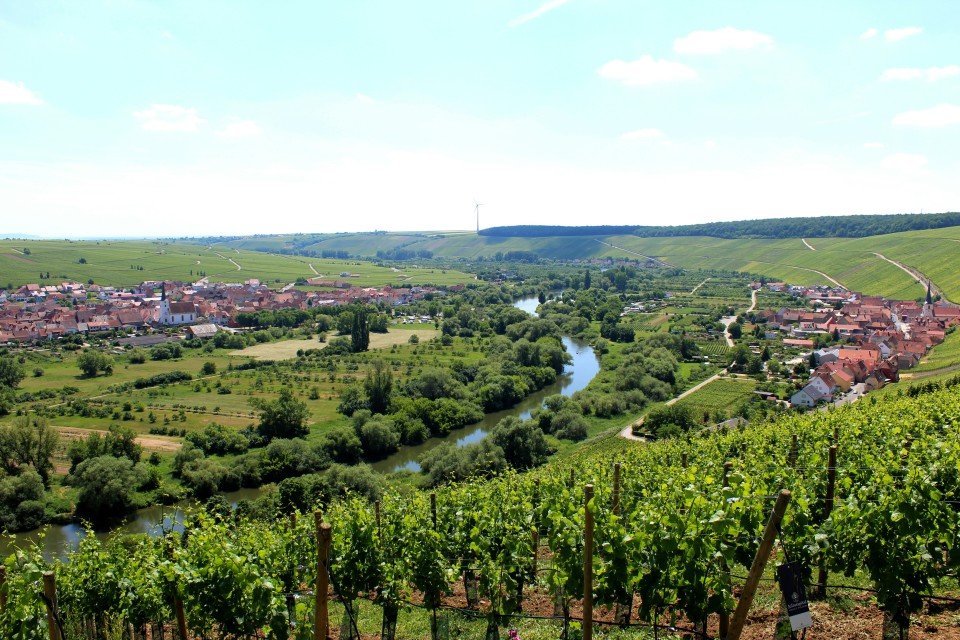
Situated in the Franconia wine region of Bavaria, Germany, Volkach is celebrated for its impressive vineyards and wine culture. Delightfully blending historic buildings, such as the Pilgrimage Church of Maria im Weingarten, with scenic landscapes adorned with vineyards, Volkach invited wine enthusiasts to explore its idyllic surroundings and savour the local wines.
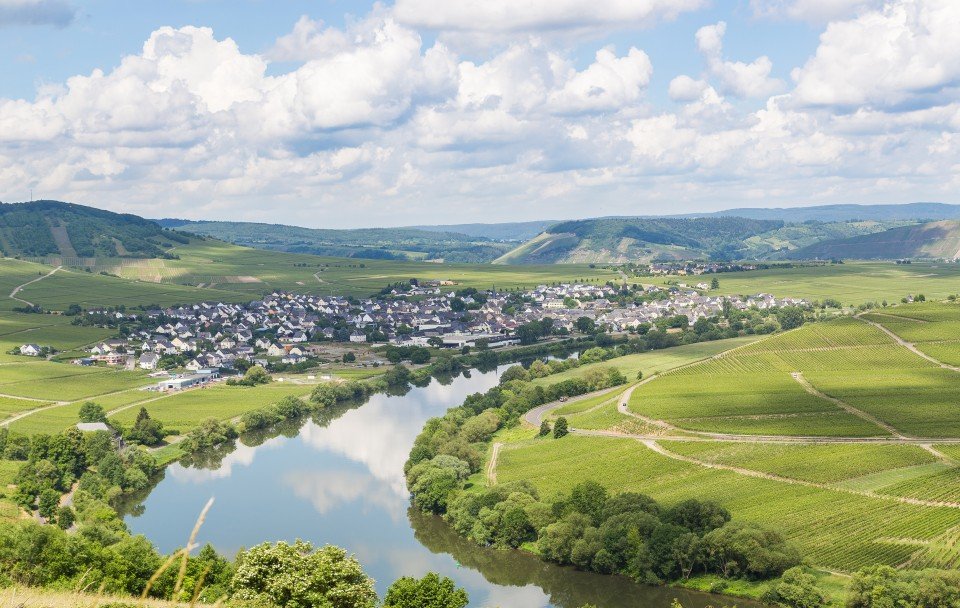
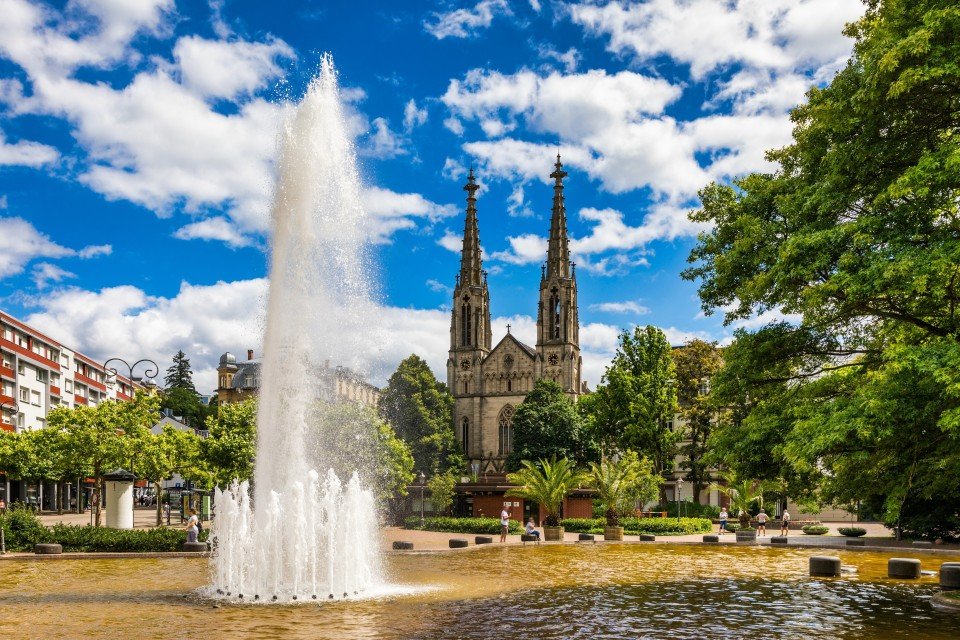
Baden-Baden is a spa town in southwestern Germany’s Black Forest, near the border with France. Its thermal baths led to fame as a fashionable 19th-century resort. Alongside the Oos River, park-lined Lichtentaler Allee is the town’s central promenade. The Kurhaus complex (1824) houses the elegant, Versailles-inspired Spielbank (casino). Its Trinkhalle has a loggia decorated with frescoes and a mineral-water fountain.
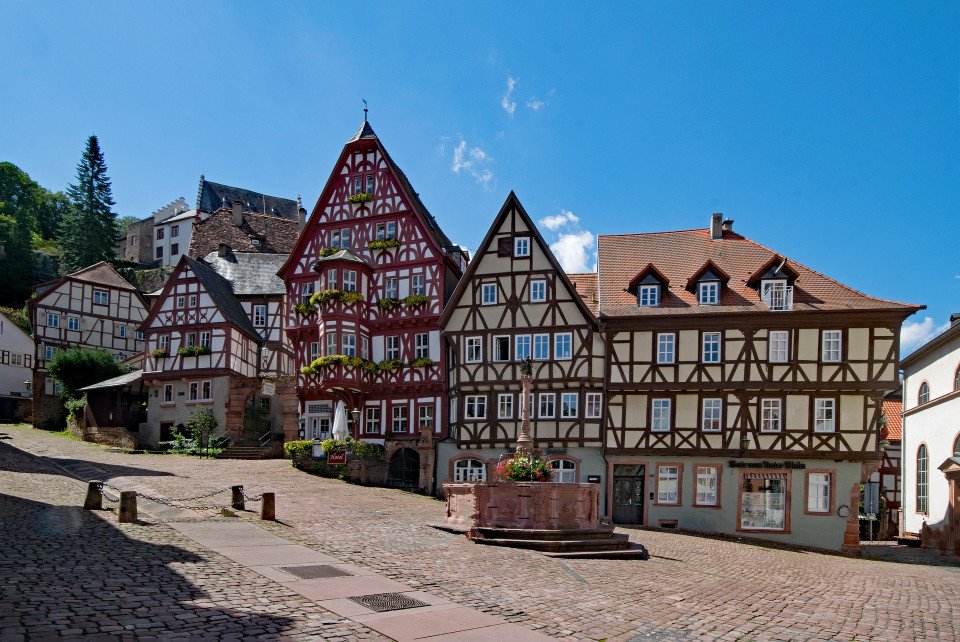
Miltenberg is a city located in Bavaria and Southern part of Germany. Located on the banks of the river Maine the city grew from its medieval roots through Viniculture, wine trade, fishery, and general river traffic, into the established and preserved town of today. Visit the Museum Stadt Miltenberg, housed in the half timbered house called the Alte Amtskellerei (The Provost’s Office) and discover the town’s history through collections depicting culture back to the Romans. A visit to castle Miltenberg is also recommended. The castle dates back to the 11th century and is now owned by the city administration. With the castle in need of rehabilitation, the Museum Burg Miltenberg was opened to exhibit classic icons and contemporary art in a historical and significant setting. The keep of the castle, which reaches twenty seven metres high, offers picturesque views of the Main Valley below and is the perfect setting to relax and enjoy some refreshments.
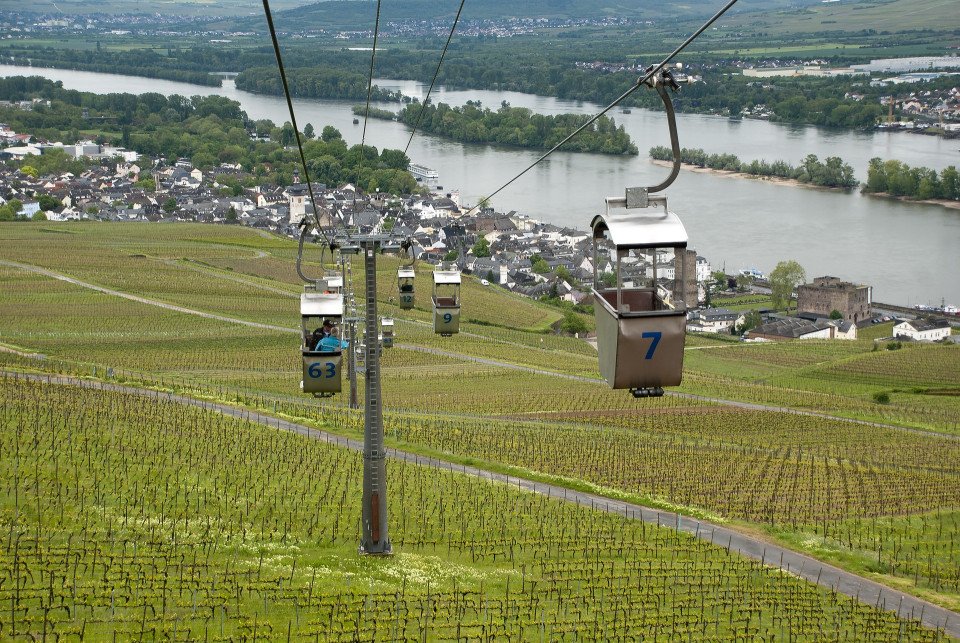
Rüdesheim is a popular stop on the Rhine, renowned for vineyards and medieval architecture. A notable feature of the town's vibrant cultural scene is the Drosselgasse, a narrow street paved with cobblestone and lined with wine taverns and local retailers, showcasing a delightful combination of local wine and traditional German hospitality. Encompassed by rolling vineyards and adorned with historic landmarks, Rüdesheim provides a quintessential German experience in a setting that seamlessly marries natural beauty with cultural richness.
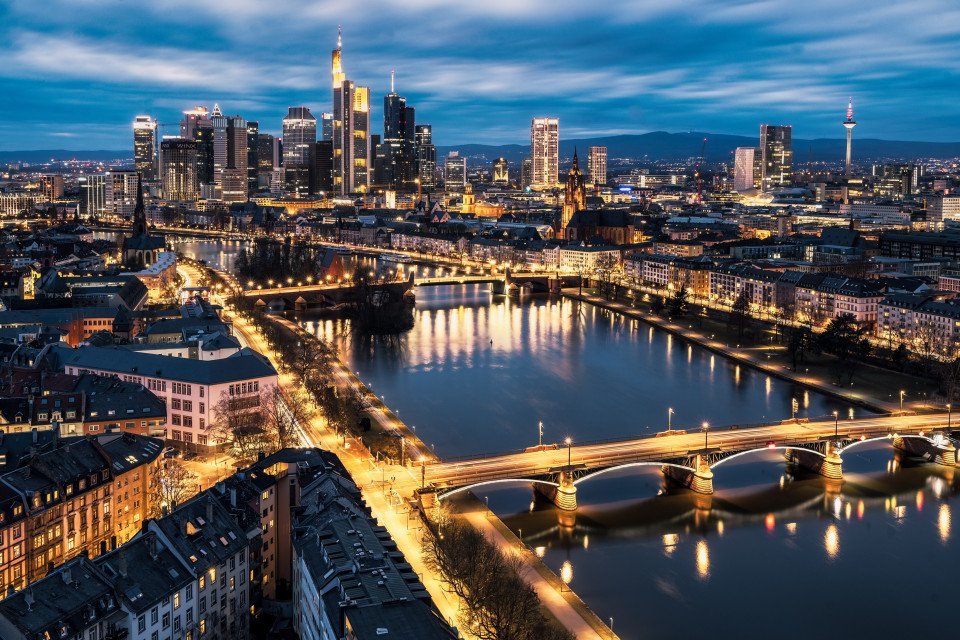
Frankfurt, birthplace of the iconic writer Johann Wolfgang von Goethe, boasts a wealth of cultural attractions, vibrant modernity and rich history. The cityscape is dominated by sleek skyscrapers, a showcase of the city's status as a dynamic metropolis and the financial capital of Europe. Home to world-class museums, diverse cuisine and lively markets, Frankfurt offers a varied array of experiences that complement its cosmopolitan character and enduring legacy.
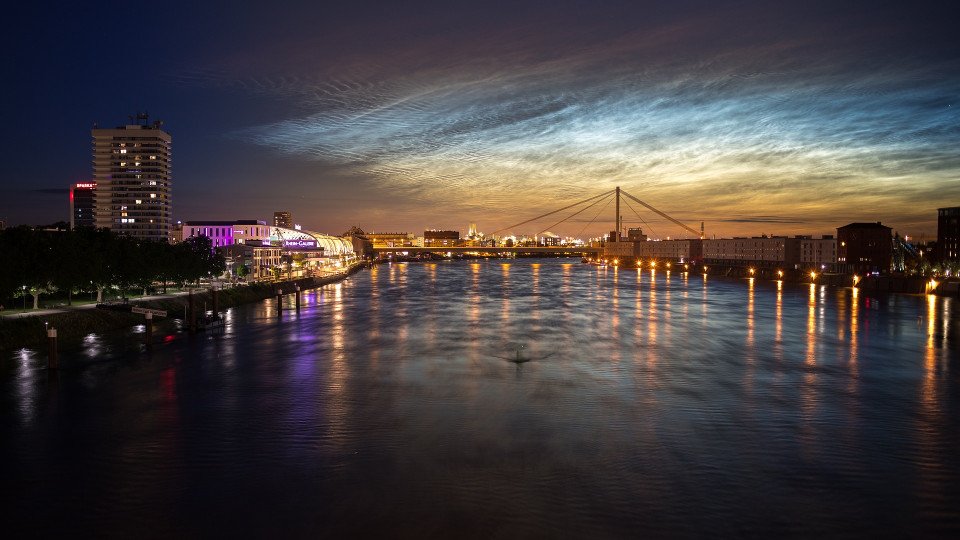
Ludwigshafen is situated on the Rhine in southwestern Germany, and is best known for its significance as a major chemical industry hub. Alongside its industrial brilliance, Ludwigshafen blends cultural attractions and rich history as home to the iconic Wilhelm-Hack-Museum, the Fredrich-Ebert-Park.
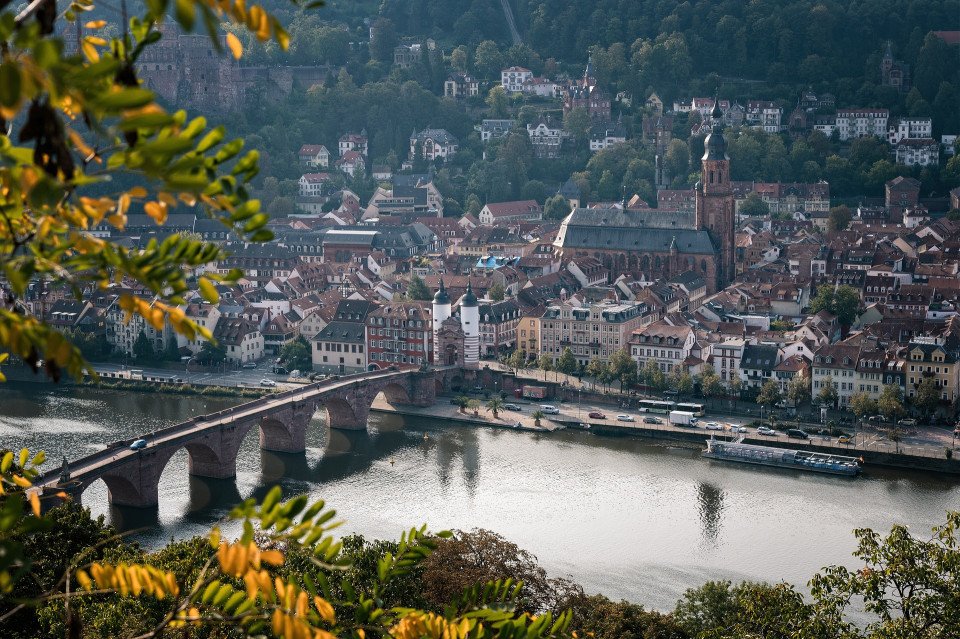

The charming seaside resort town of Ahlbeck, situated on the island of Usedom in north-east Germany, invites visitors to indulge in serene beaches, historic architecture and tranquil ambiance. Recognisable for its elegant pier, Ahlbeck offers panoramic views of the Baltic Sea and serves as a focal point for leisurely strolls and scenic sunsets. The town's well-preserved villas, built in the traditional Bäderarchitektur style, exude a nostalgic charm, harkening back to the golden age of seaside holidays in the late 19th century. Visitors can indulge in wellness treatments at luxurious spas, explore the lush parks and gardens, or sample freshly caught seafood at waterfront restaurants. With its timeless allure and idyllic coastal setting, Ahlbeck provides a tranquil escape for travellers seeking relaxation and rejuvenation by the sea.


